This post contains Minkowski diagrams of flat spacetime with light cones to illustrate the causal structure, as well as graphical interpretations of Lorentz transformations (“boosts”), and more. Some figures were inspired by Very special relativity – An illustrated guide by Sander Bais. For more related figures made with TikZ, please see Relativity category. An excellent and animated explanation of Lorentz transformation is given by this YouTube video by ScienceClic English.
Table of content:
- World lines
- Causal structure of Minkowski spacetime
- Coordinate transformations
- Simultaneity
- Time dilation
- Length contraction
- Paradoxes
- Hyperbolae
- Analogy to Euclidean rotation
- Lorentz factor
- Full code
World lines
Several spacetime worldlines with different velocities.
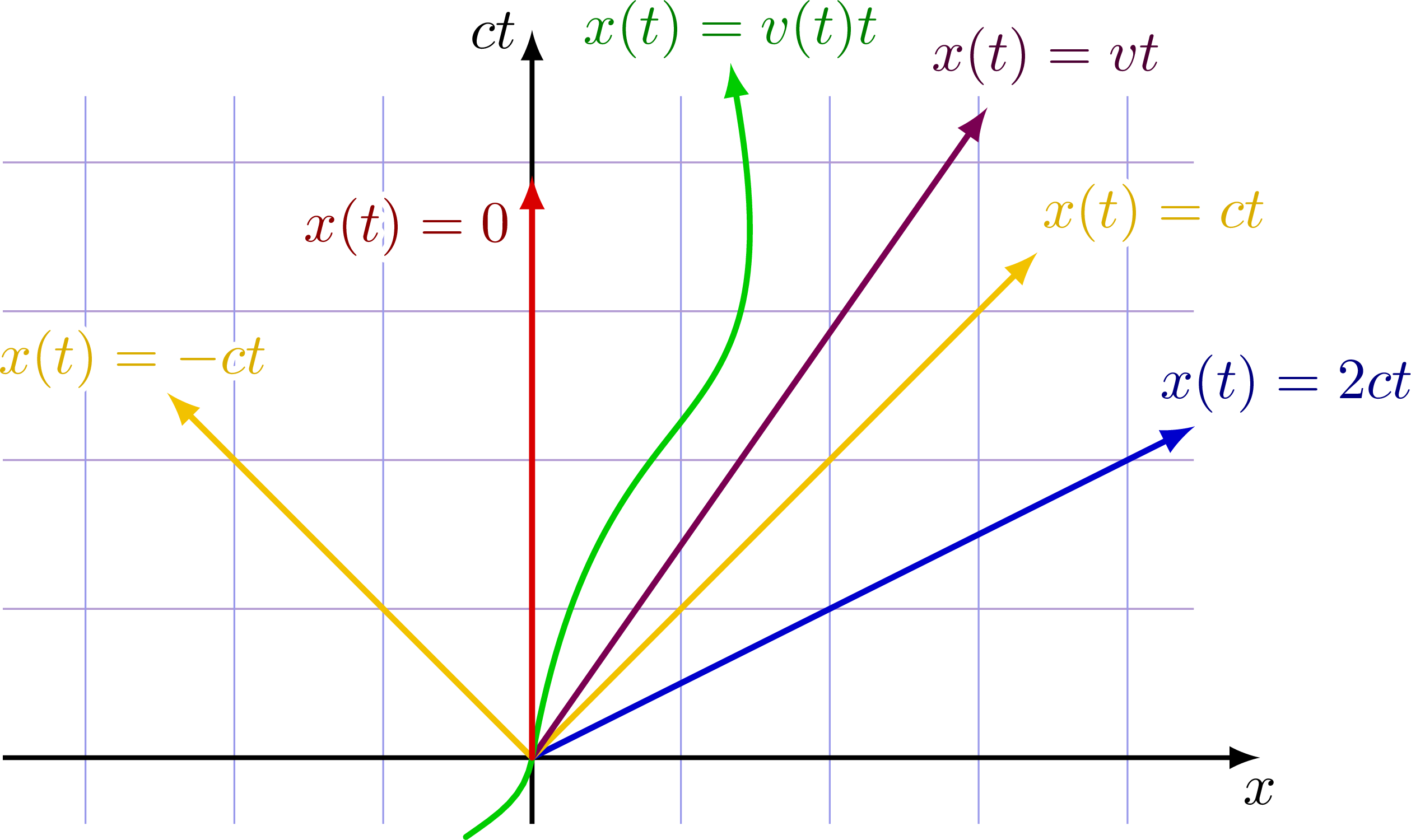
Two observers at rest (w.r.t. to each other) communicating by reflecting a light signal.
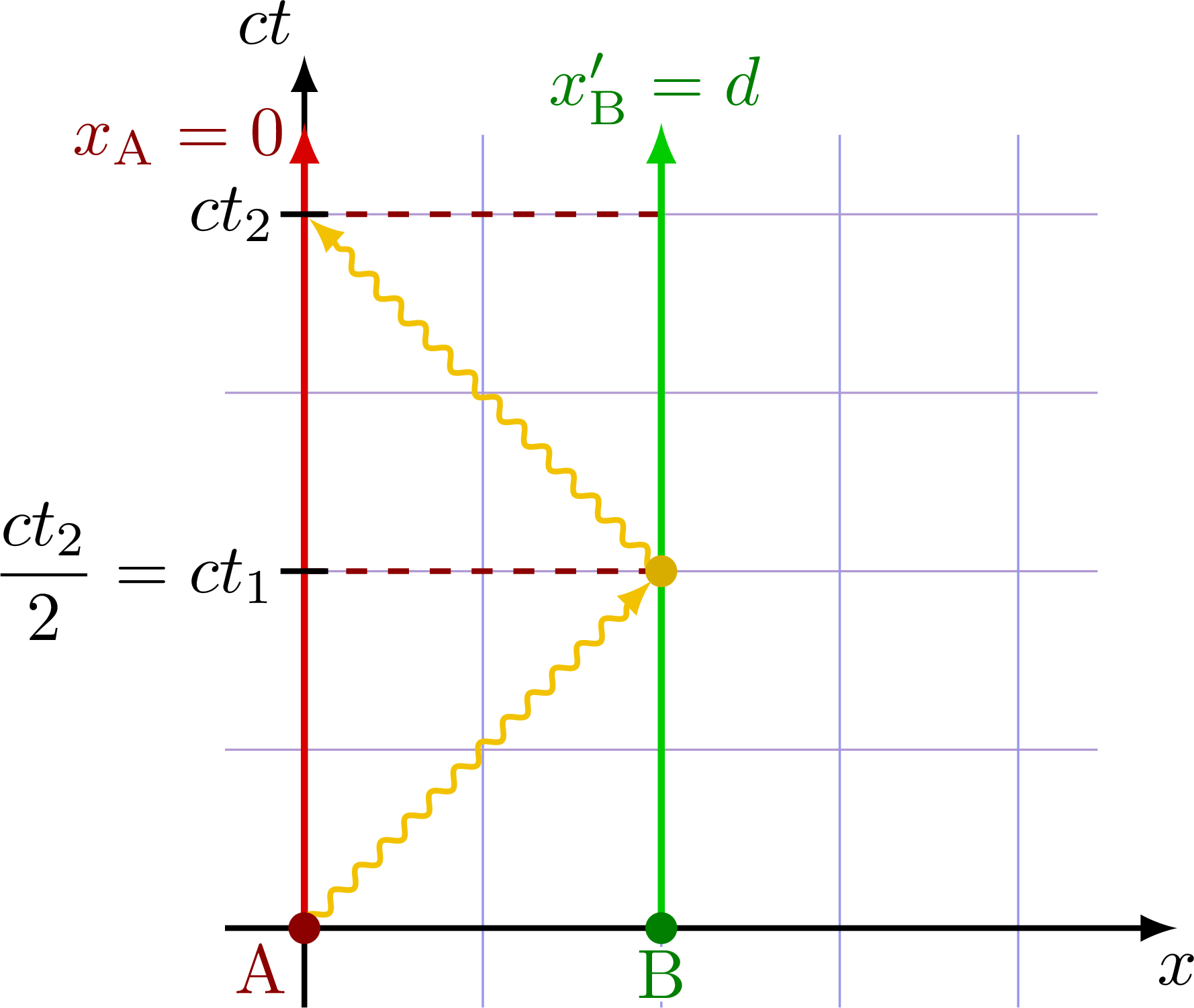
Derivation of the relativity of simultaneity with the thought experiment of two moving observers (with the red and green worldlines) communicating with a light signal. Assuming the speed of light is c in all inertial frame of references (second postulate of special relativity), the dashed lines represent the plane of simultaneity. All events on a given dashed line happen at the same time from the point of view of the moving observers.
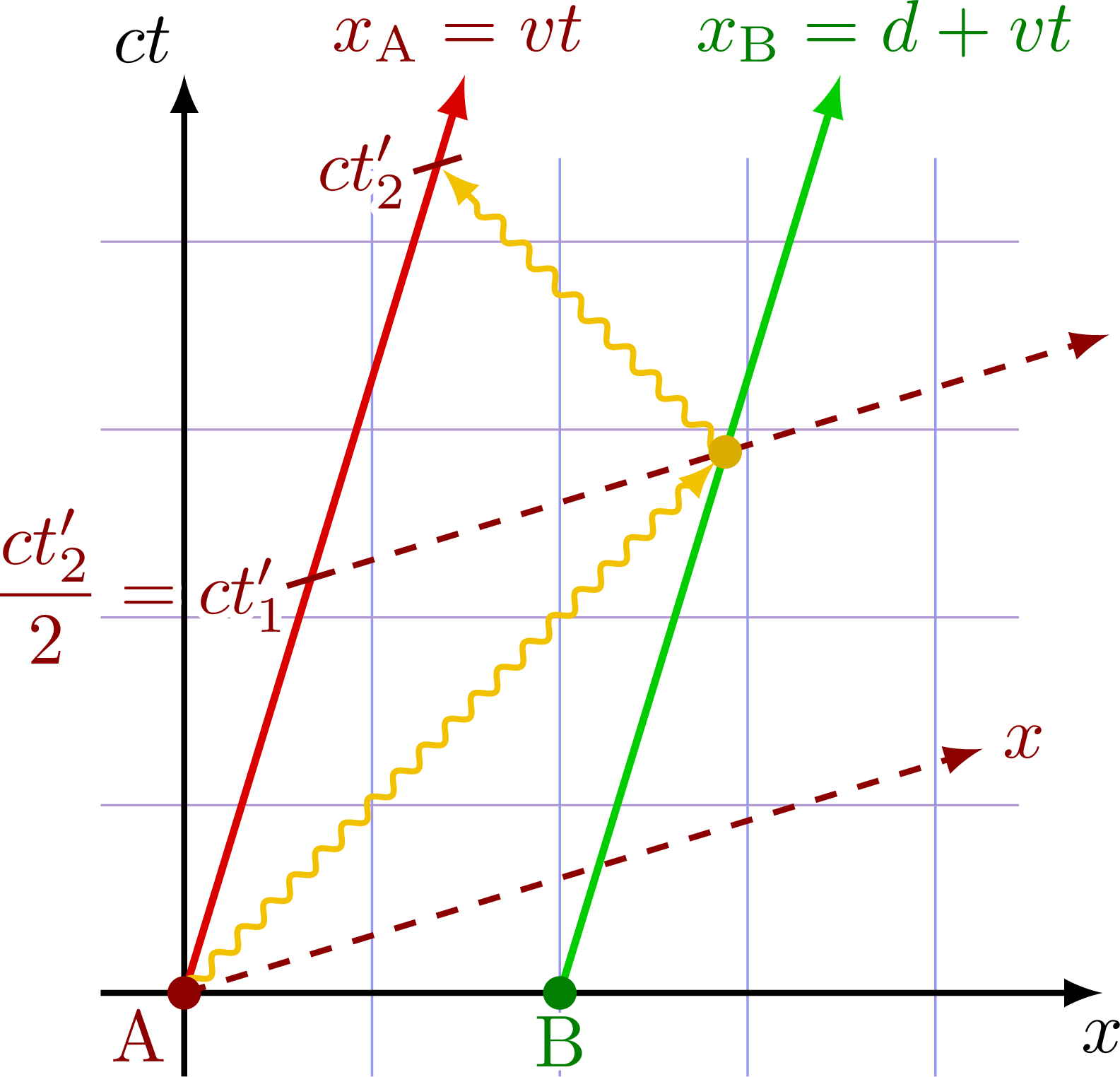
Causal structure of Minkowski spacetime
Future and past lightcone at a 45 degrees angle to illustrate the causal structure of Minkowski space.
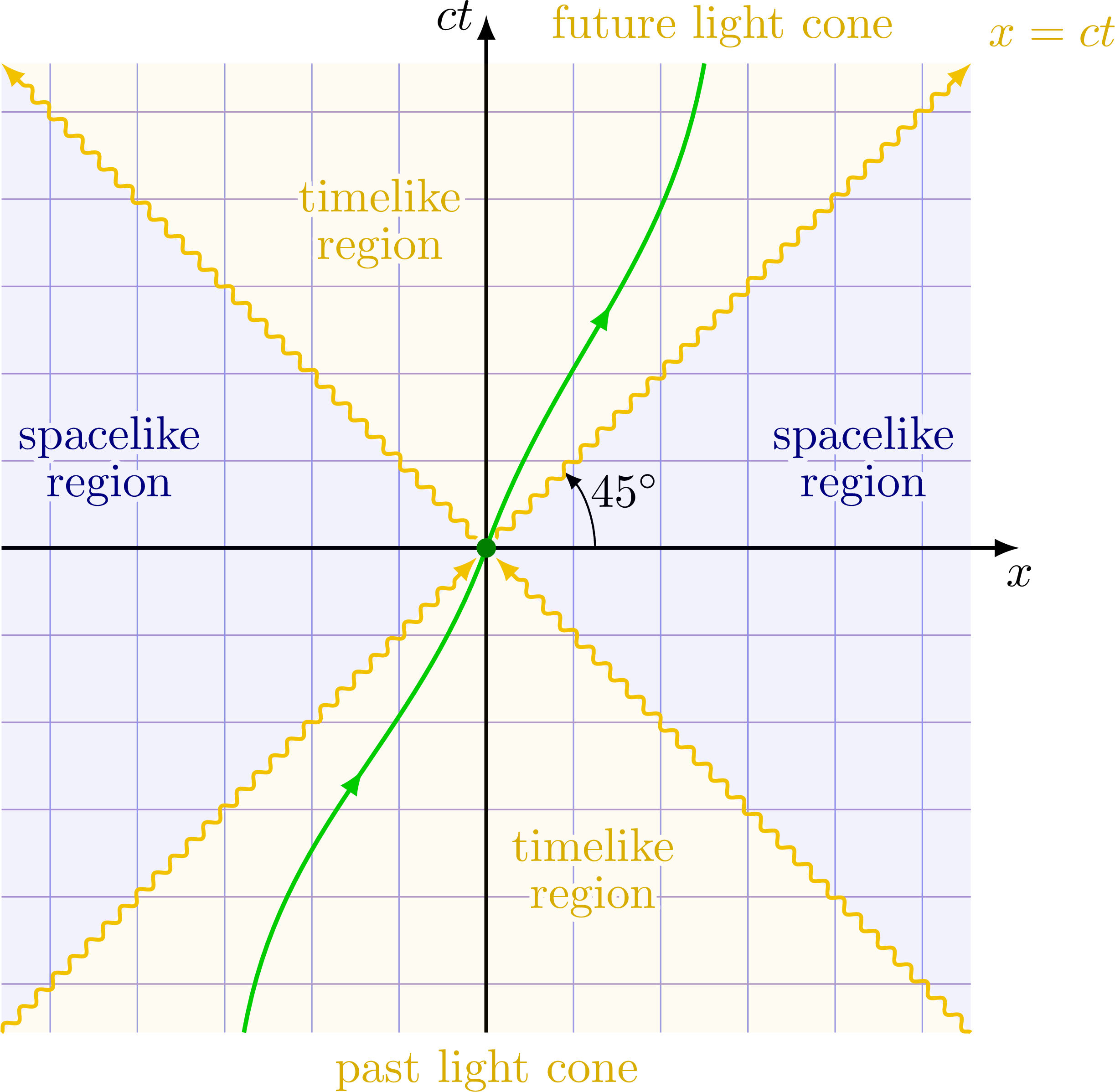
Different types of spacetime vectors and separation: timelike (s2 > 0), spacelike (s2 = 0) and lightlike or null (s2 < 0).
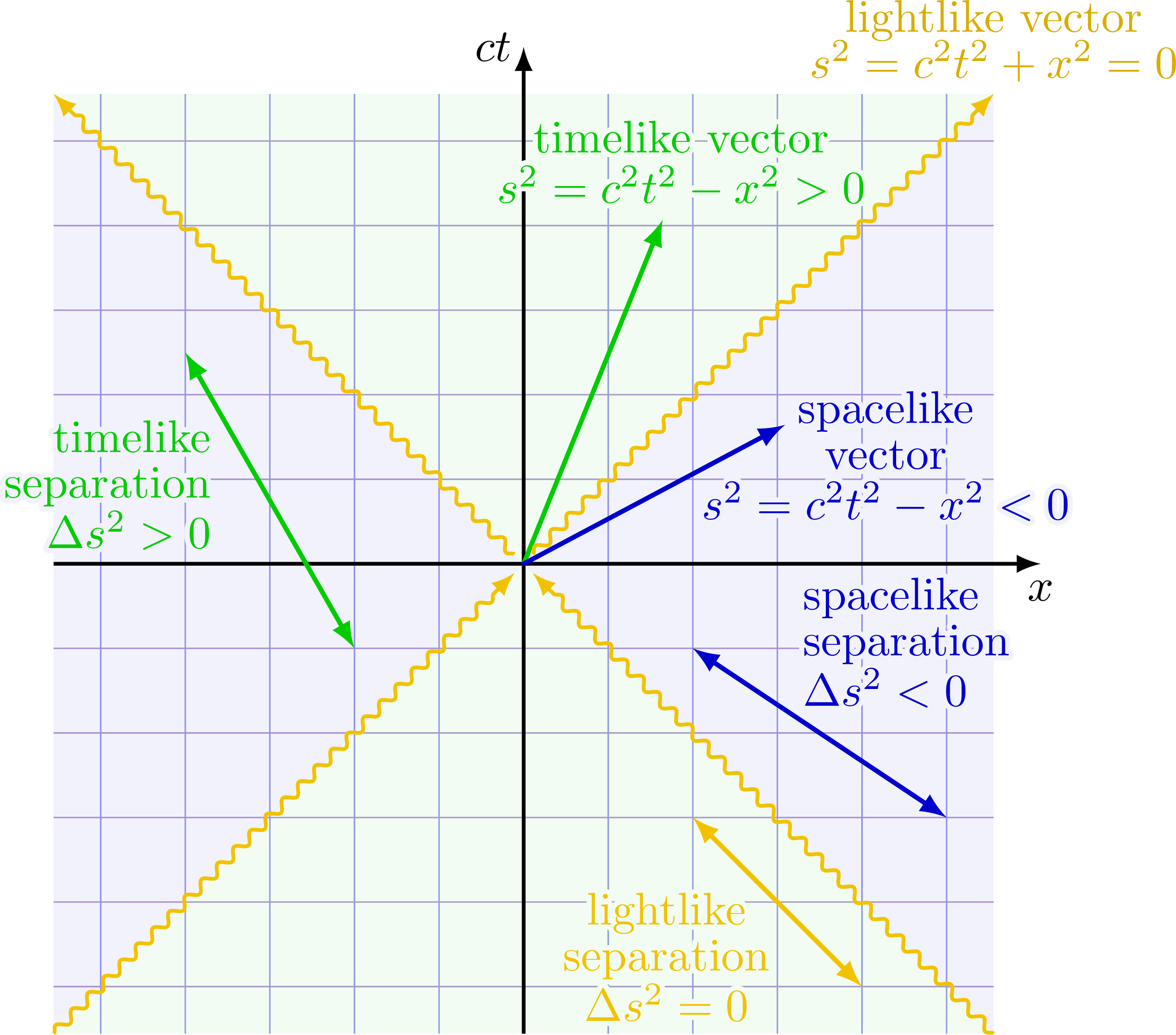
Overlapping light cones of two observers separated in spacetime to illustrate the causal structure.
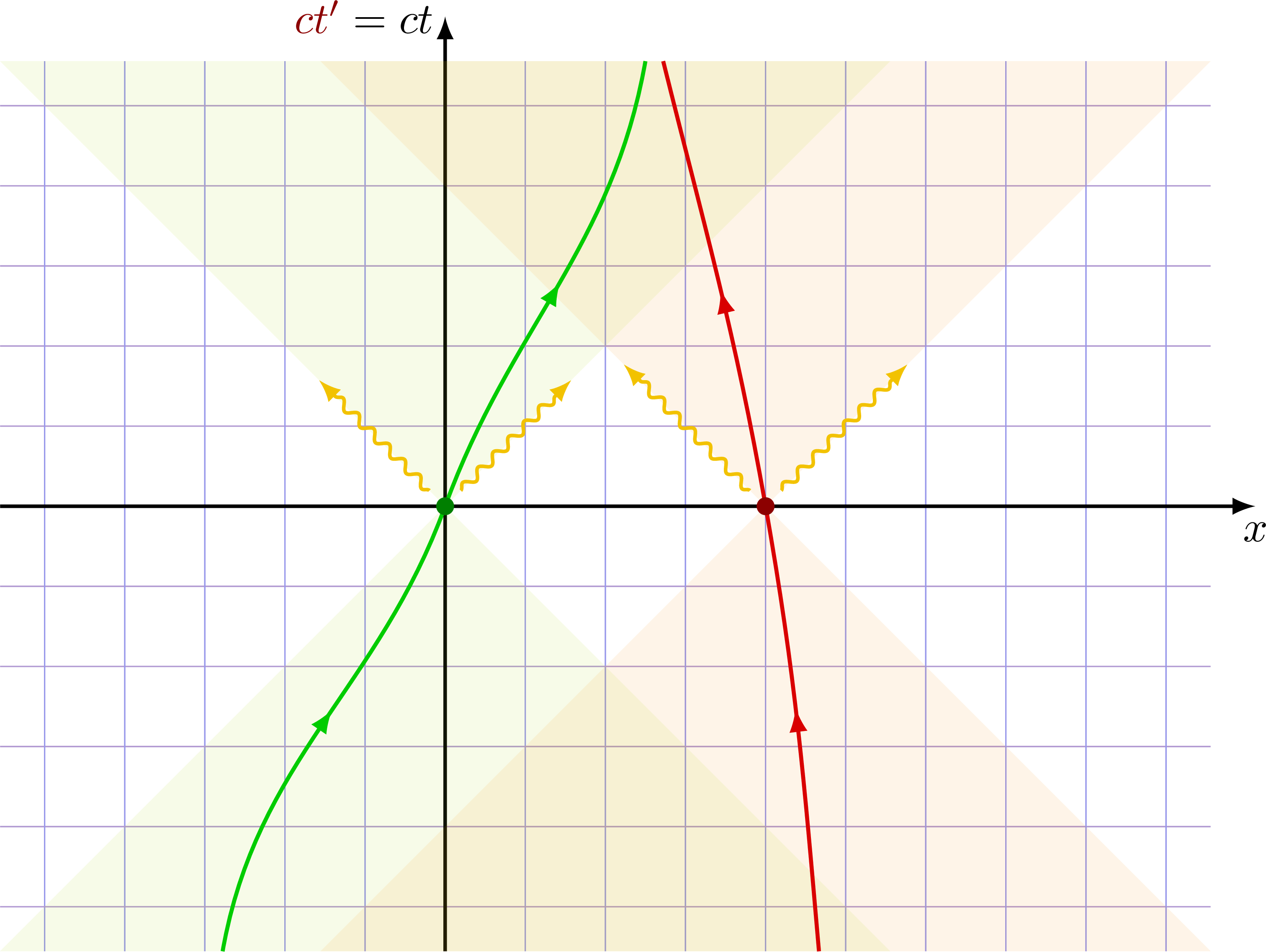
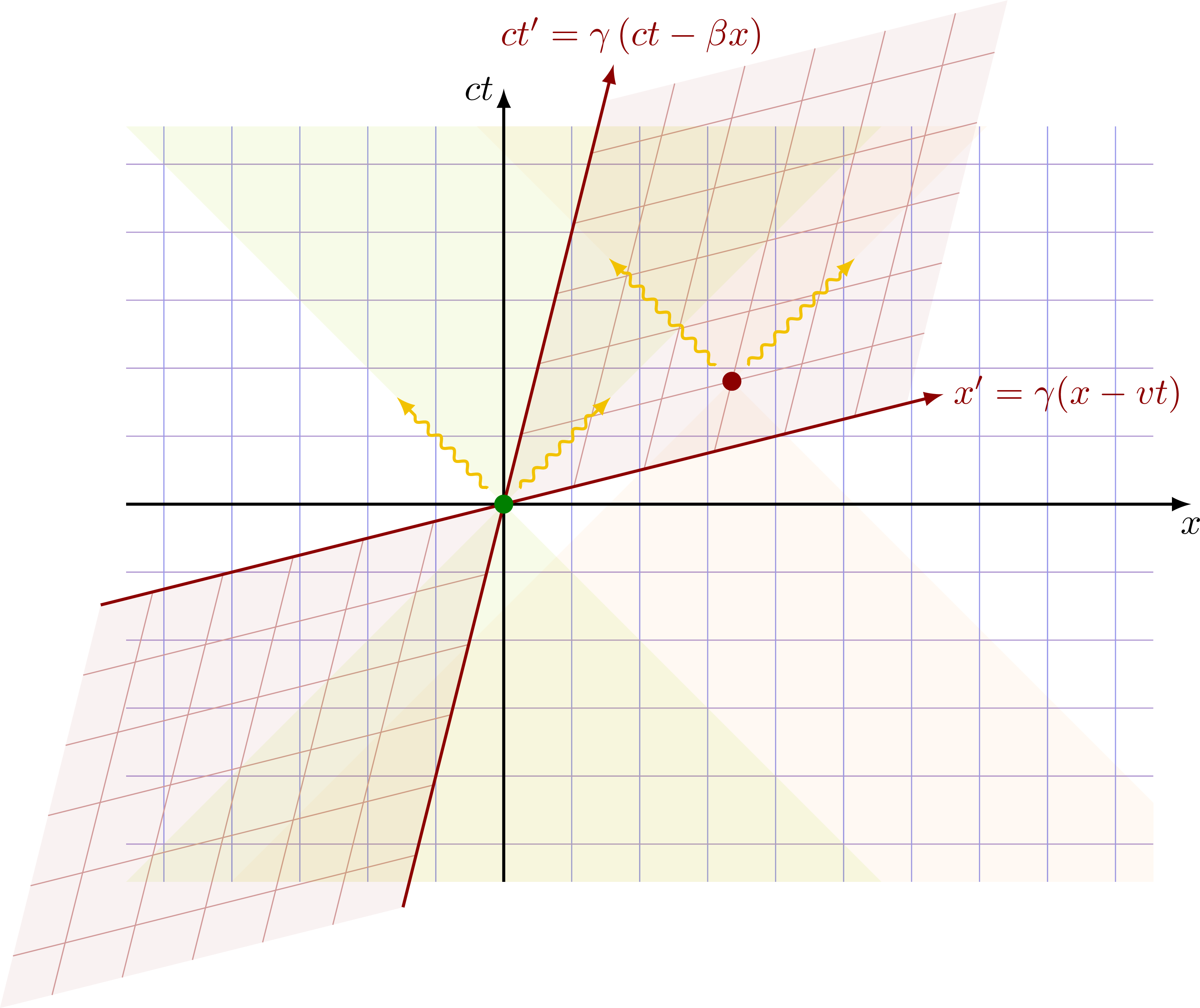
Coordinate transformations
Simple 2D rotation in the (Euclidean) xy plane.

Galilean transformation for a moving frame. Clocks in both frames are equal (the grid lines at constant time ct and ct’ coincide).
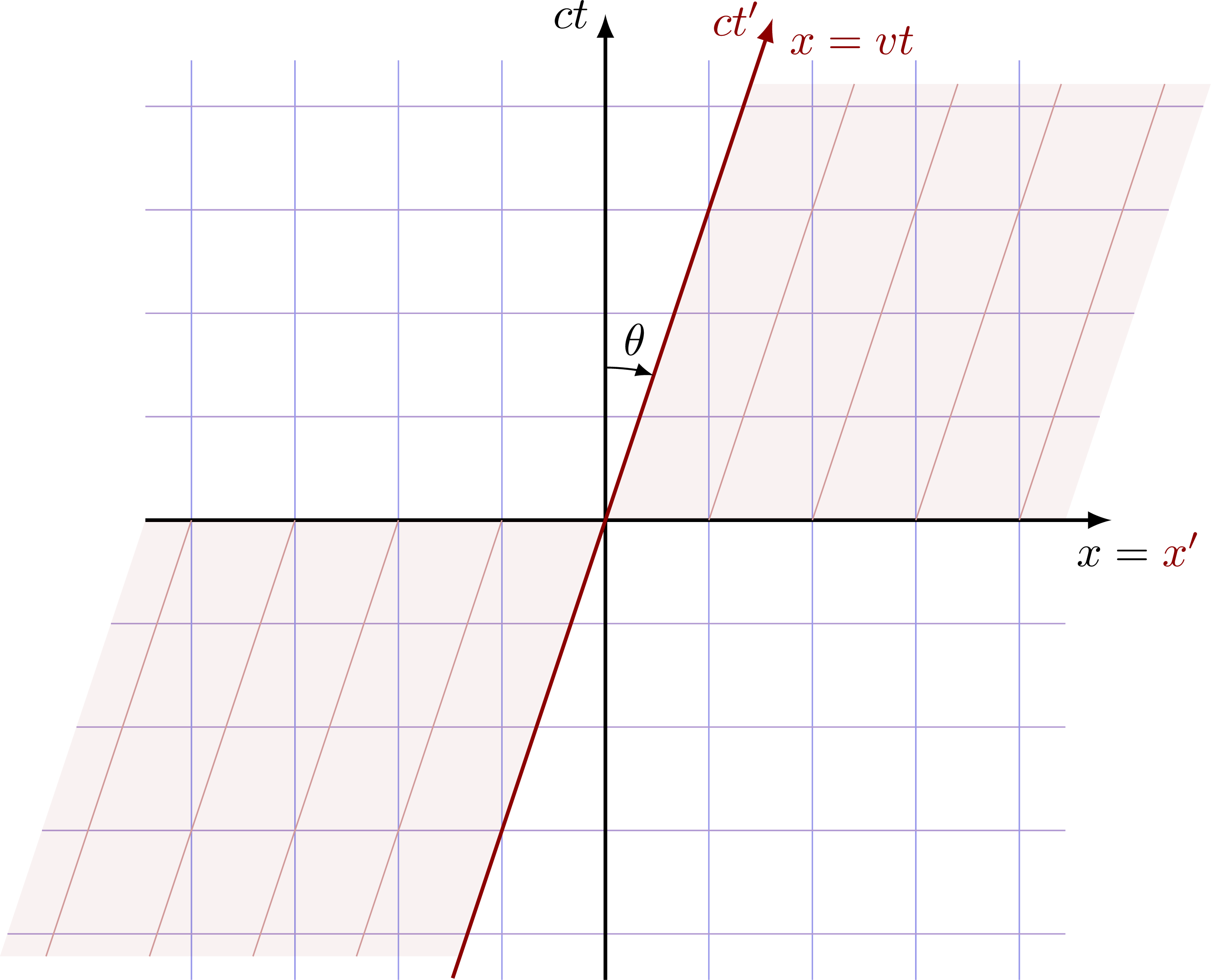
Lorentz transformation, or “boost”. Notice that the angle θ is given by the slope β = v/c = tanθ.

Inverse Lorentz transformation, or equivalently, if the boosted frame is moving to the left (in the negative x direction).

Simultaneity
Events A and B are simultaneous in the rest frame S, but in the boosted frame S’, B happens before A.
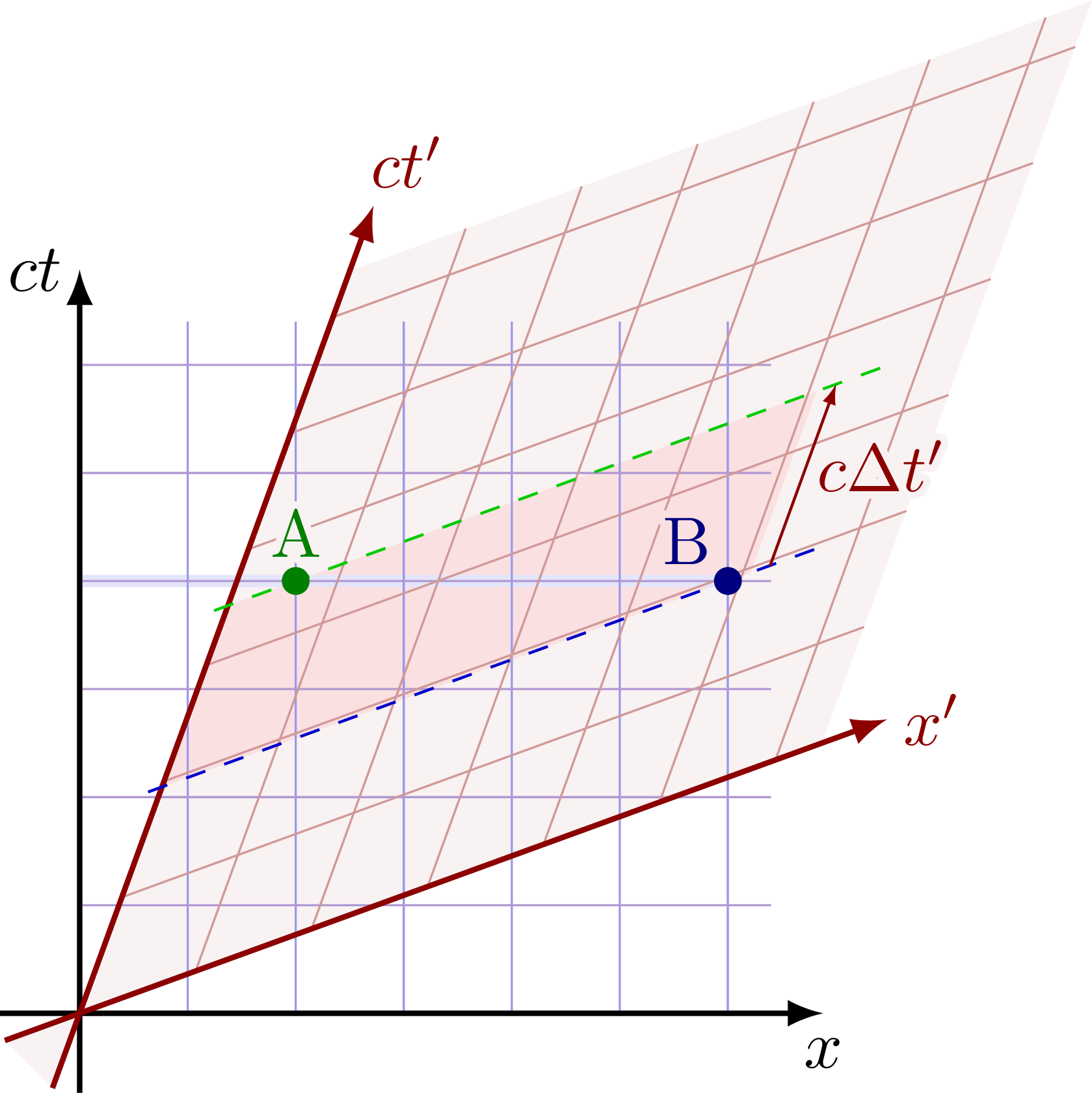
Events A and B are simultaneous in the boosted frame S’, but in the rest frame S, A happens before B.
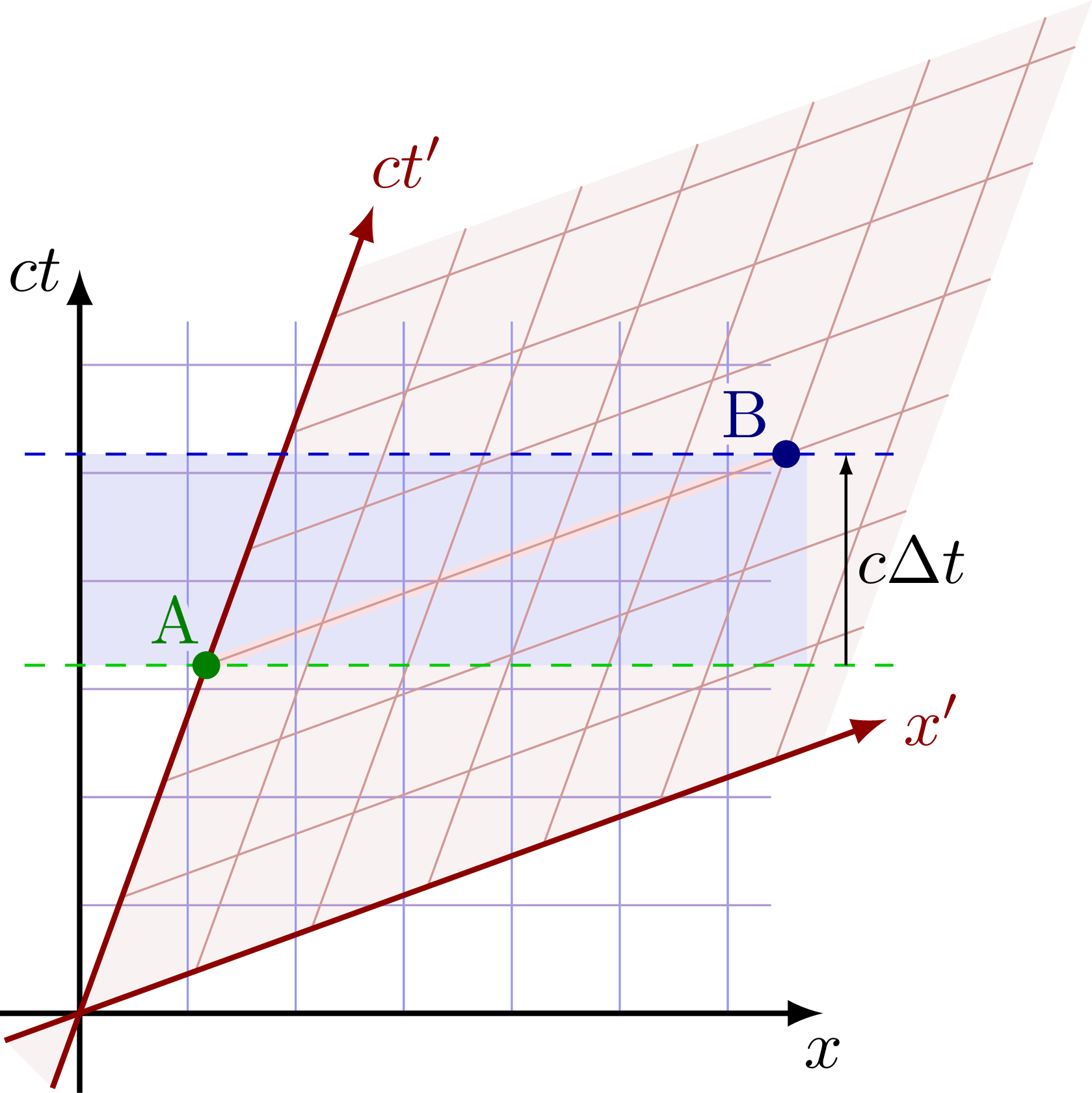
Relativity of simultaneity. Two observers experience events at in different order: In frame S, A happens before B, while in frame S’, B happens before A.
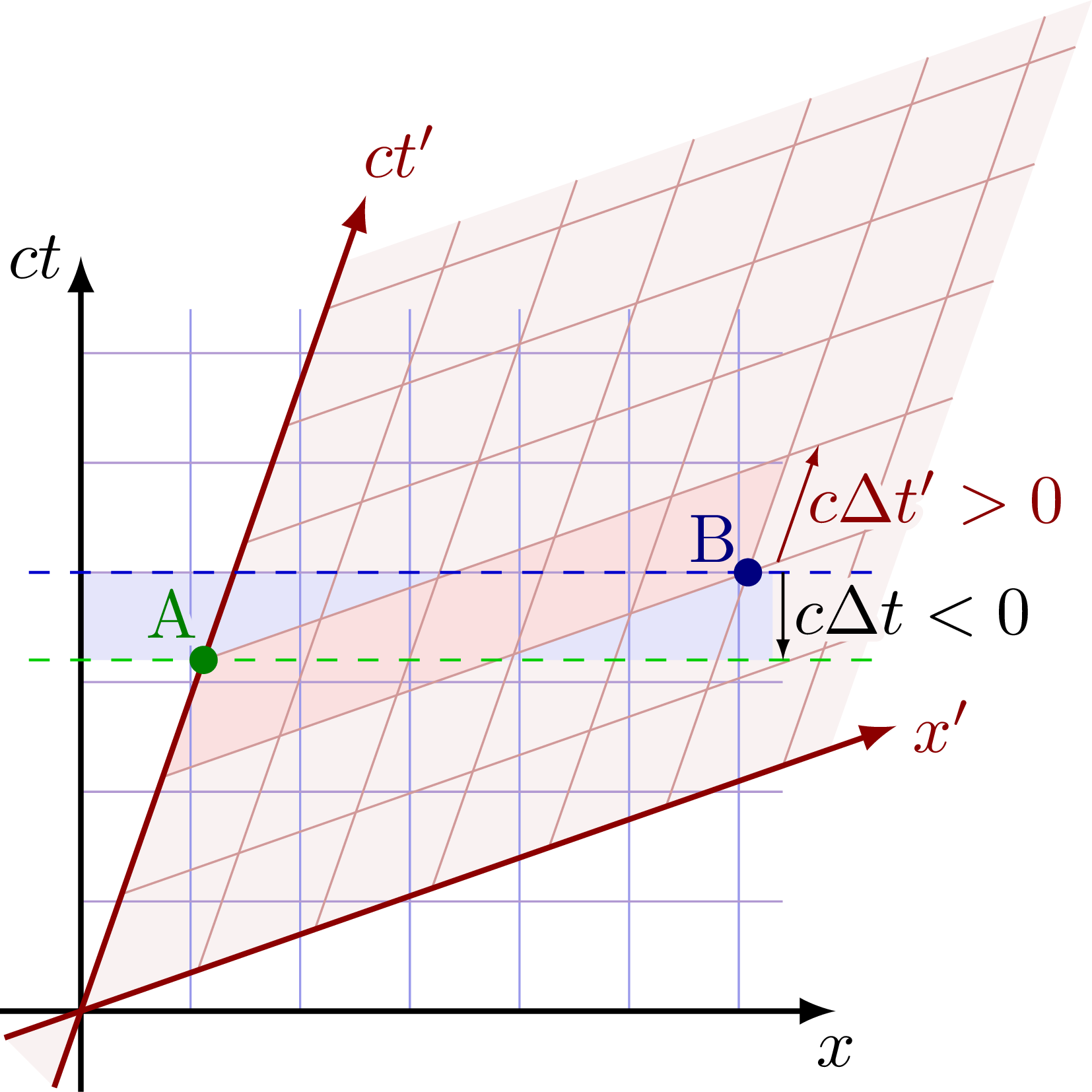
Time dilation
Time dilation in the boosted frame S’ for events at a fixed point of space in frame S. The time separation between A and B is longer in S’ than in S; Δt’ > Δt. The derivation is given in these lecture notes by Dr. Russell L. Herman.
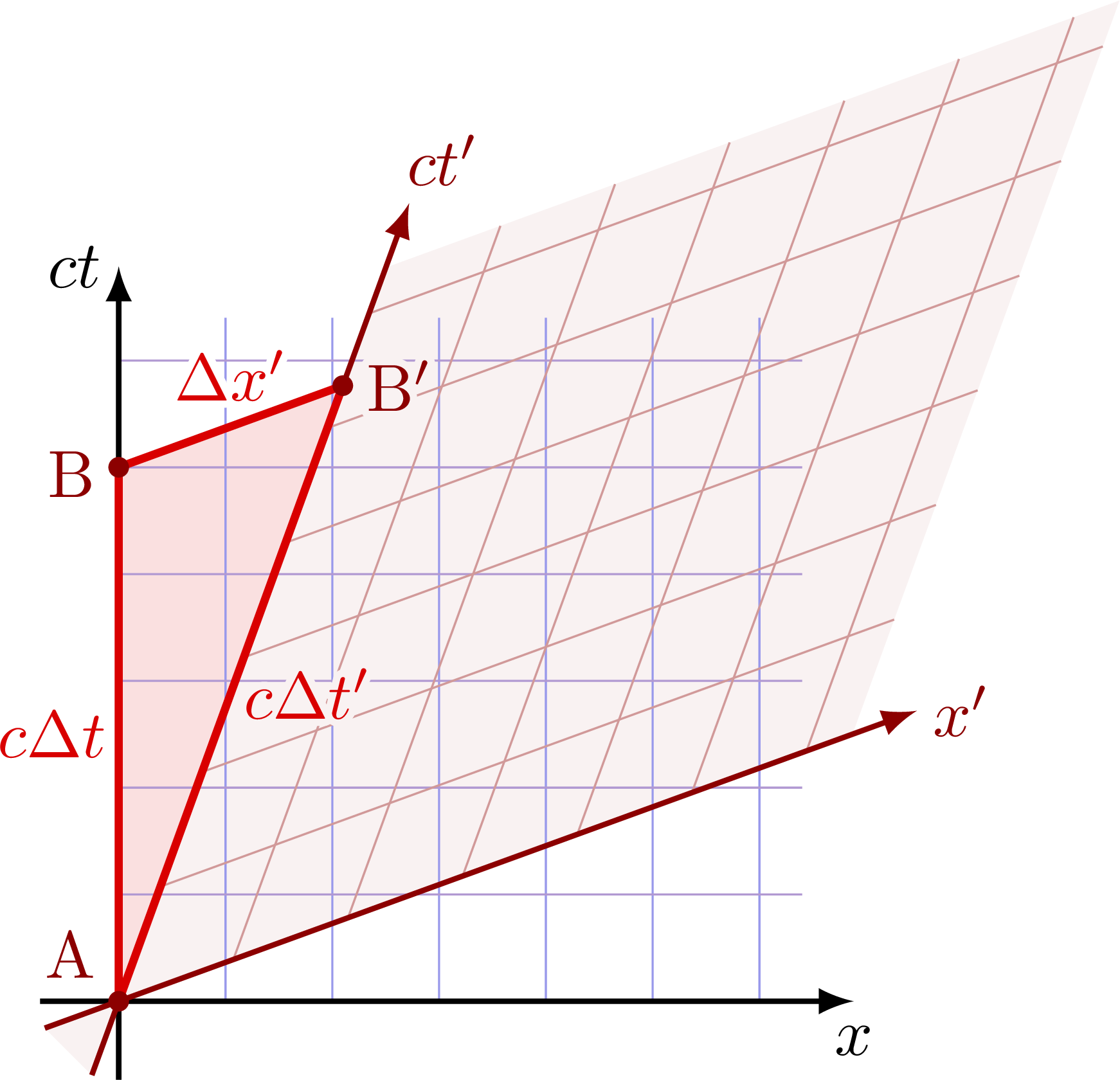
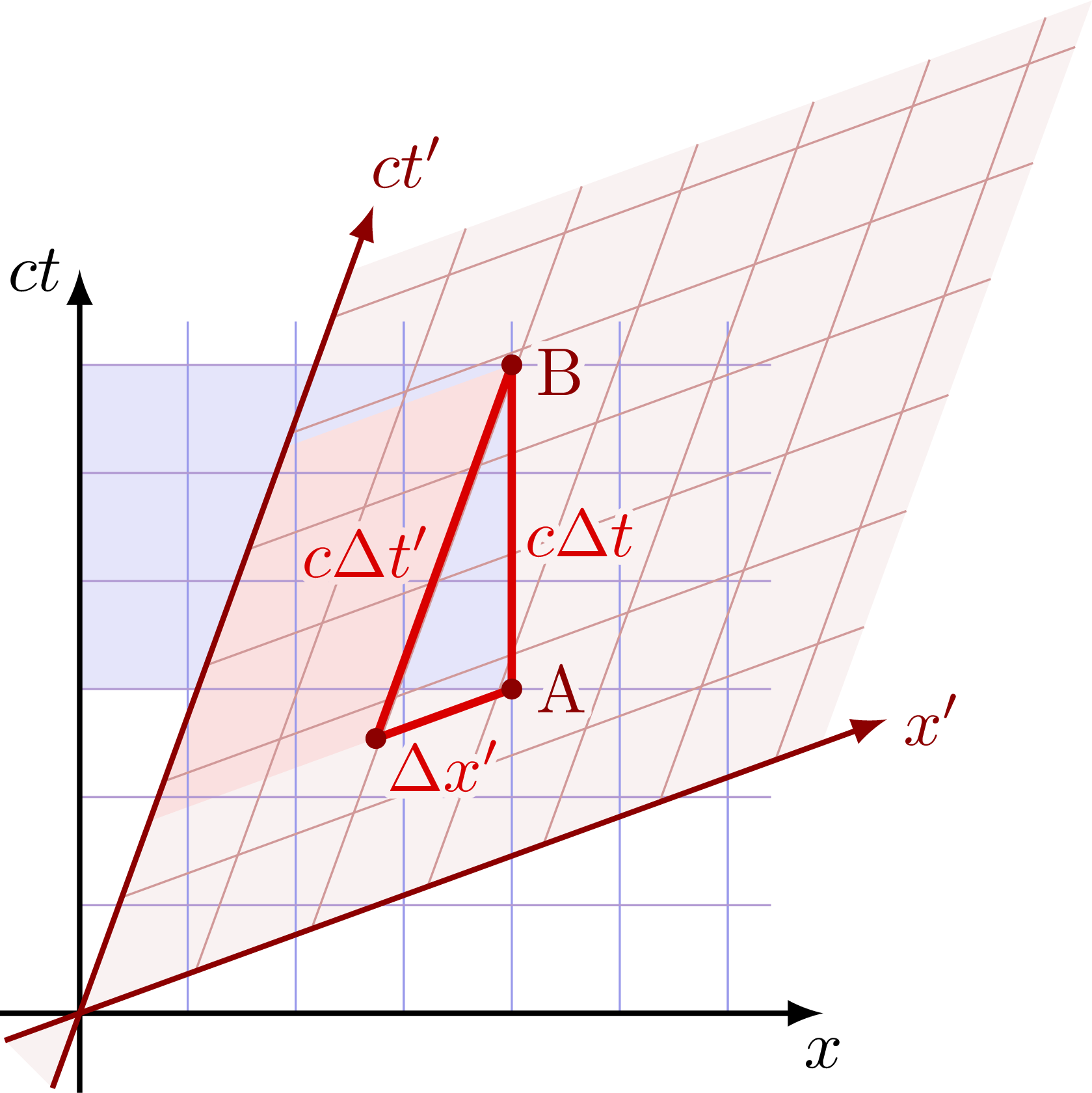
Time dilation for events at a fixed point of space in the boosted frame S’. The time separation between A and B is longer in S than in S’; Δt > Δt’.
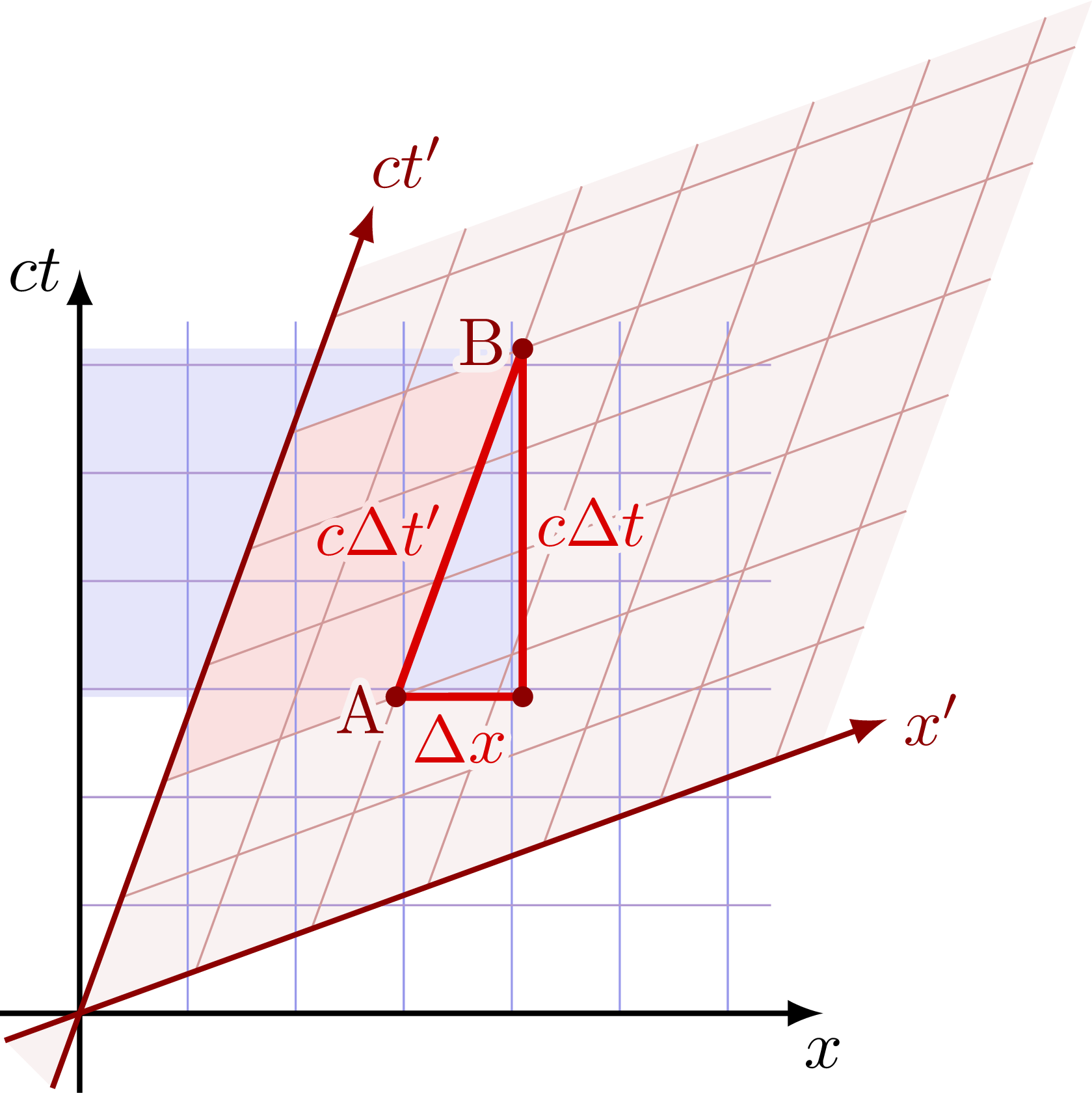
Length contraction
Length contraction of a rod at rest in frame S. The rod is shorter in the boosted frame S’, because it is moving relative to this frame. The derivation is given in these lecture notes.
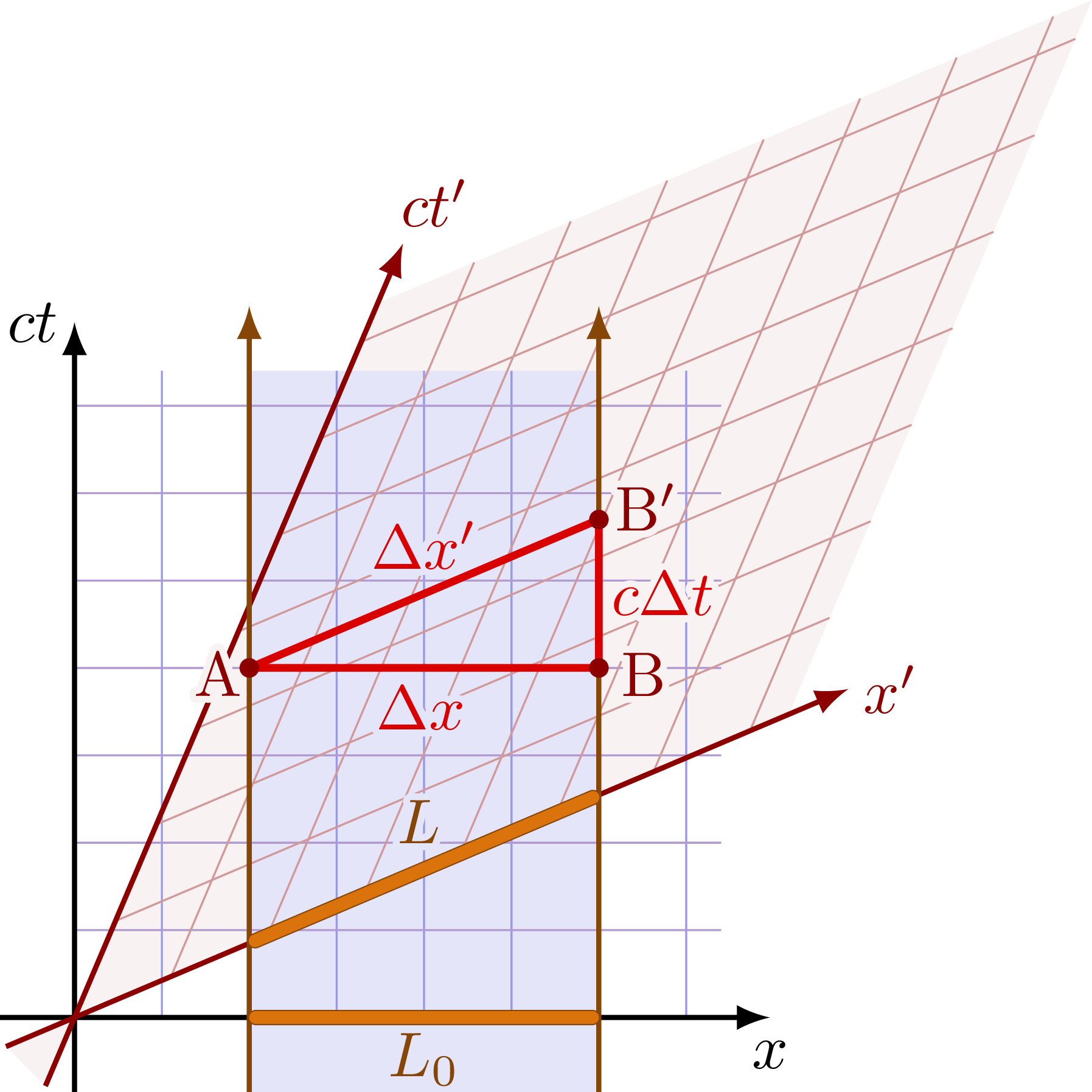
Length contraction of a rod moving in frame S. The rod is shorter in the frame S’, because it is moving relative to this frame.
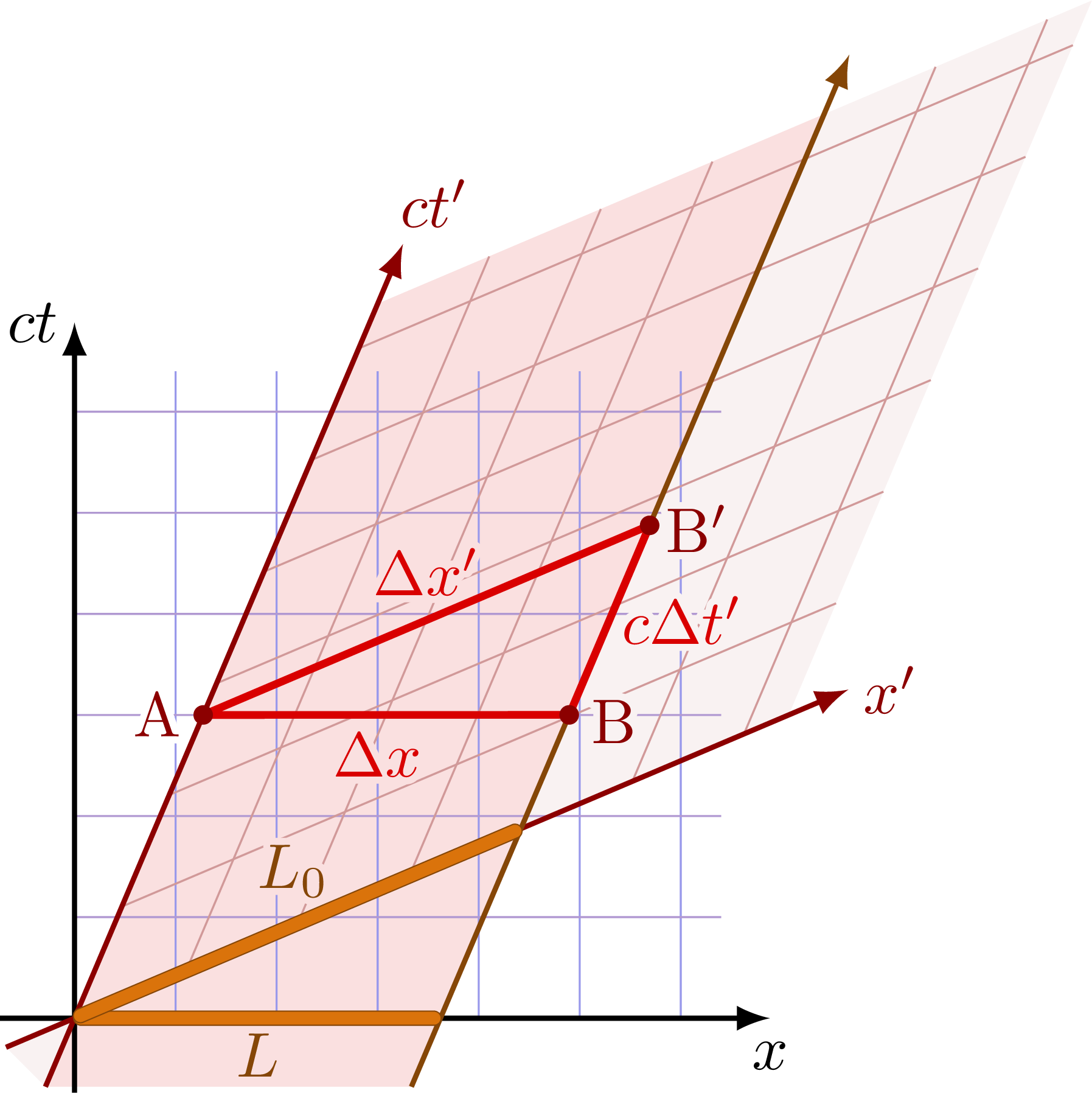
Paradoxes
Ladder paradox: Due to length-contraction a long ladder moving at relativistic speed is short enough to fit in a barn with both doors simultaneously closed. In the moving frame S’, however, the barn is contracted and cannot fit the ladder. The solution to the paradox is that the doors are never simultaneously closed in S’ due to the relativity of simultaneity.
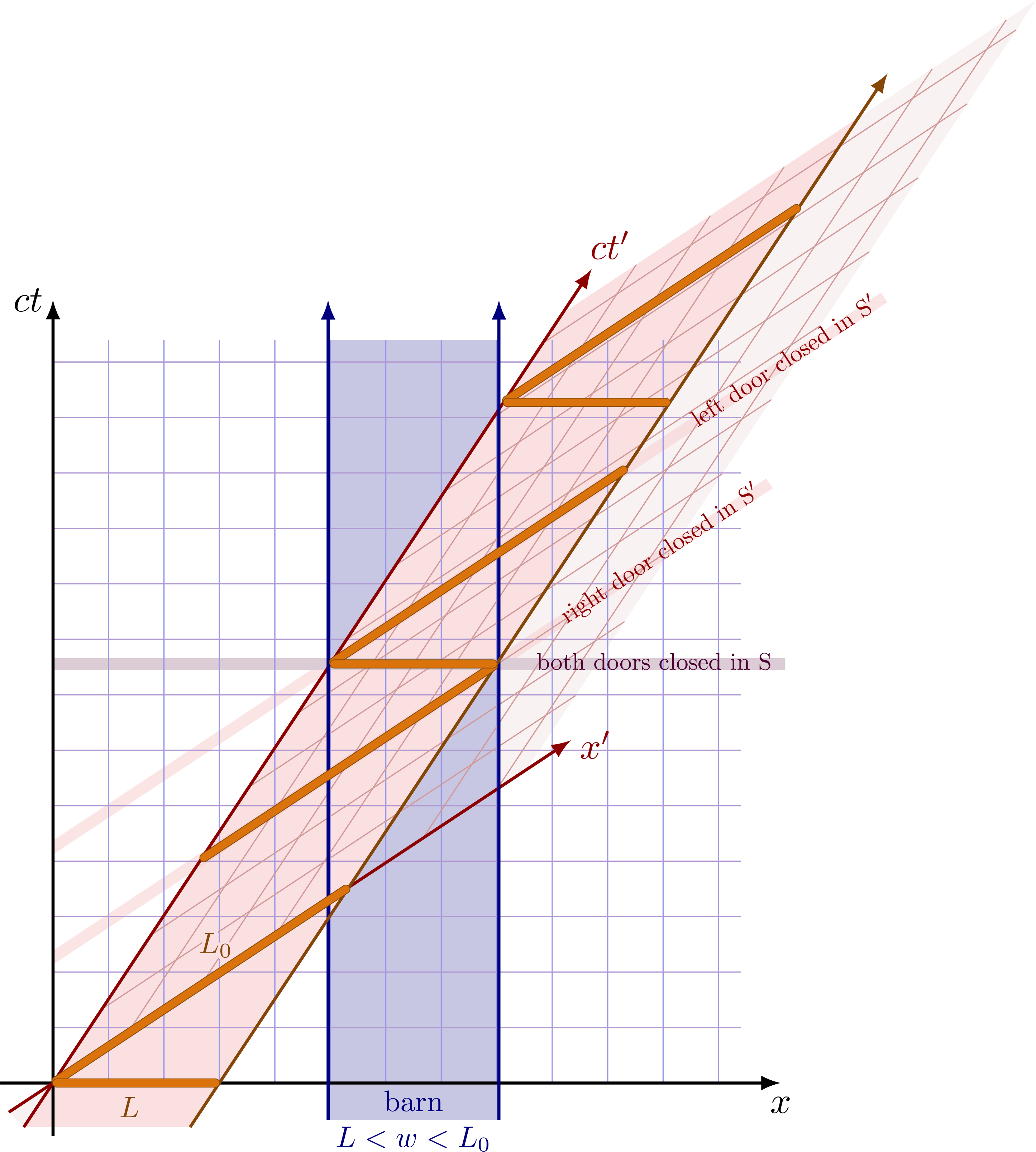
From the perspective of the observer in their rest frame S’, the barn is moving, and the doors are not closed simultaneously:
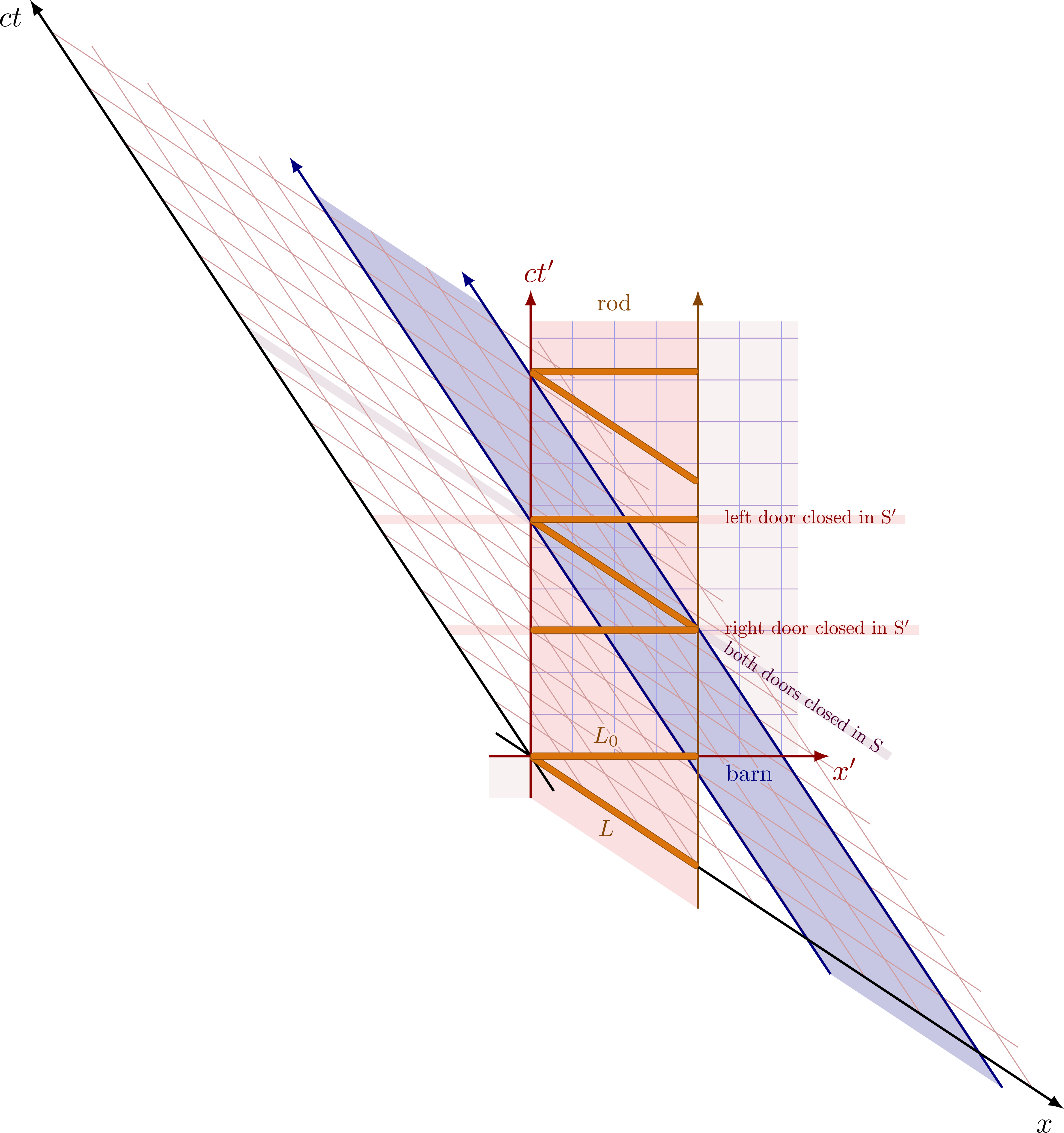
Twin paradox explained with planes of simultaneity.
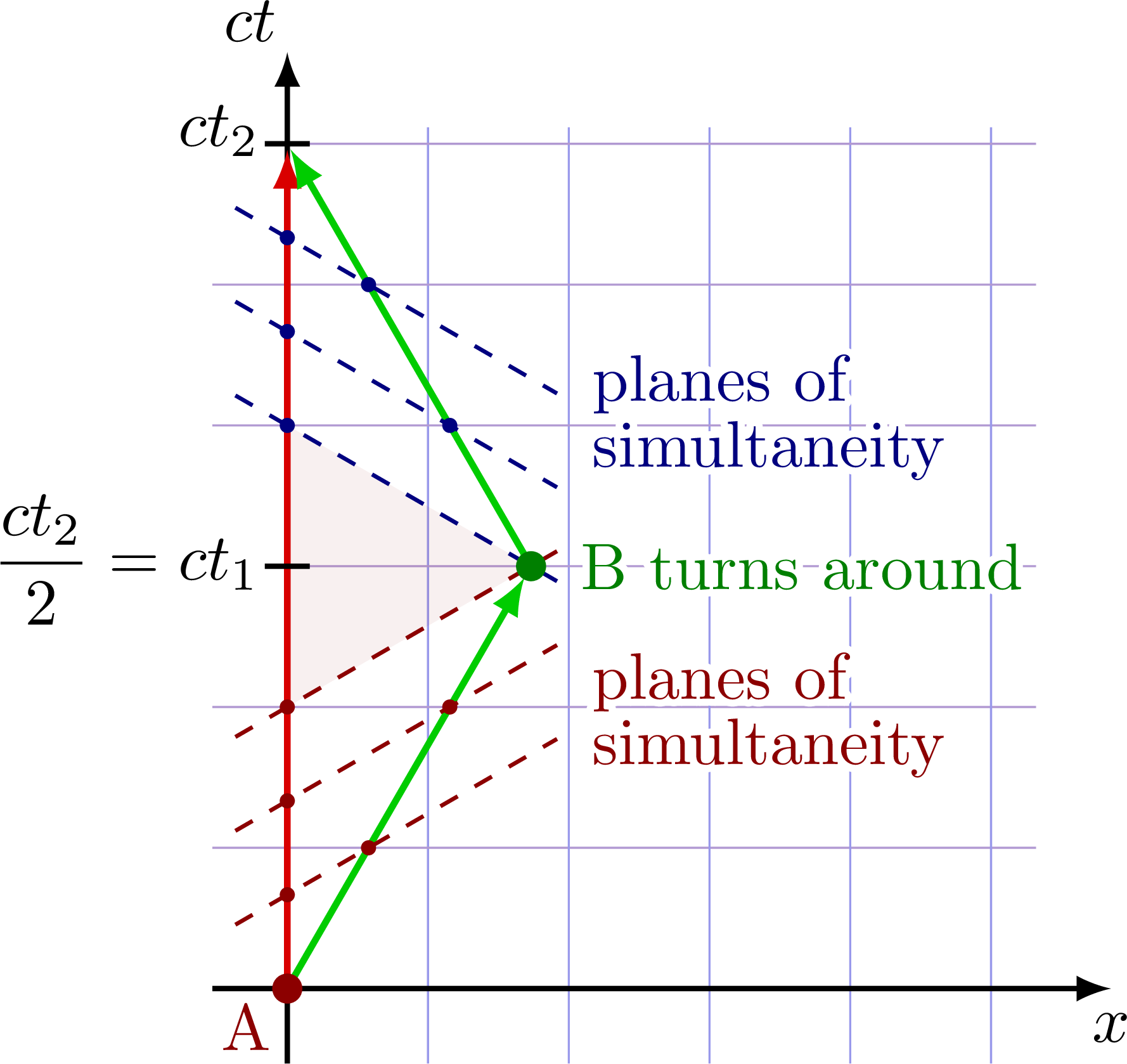
Hyperbolae
Hyperbolae in Minkowski spacetime to derive the Lorentz transformation in terms of hyperbolic functions sinh and cosh in analogy to rotation. The red point is boosted along the red hyperbola, such that its spacetime seperation from the origin remains constant.
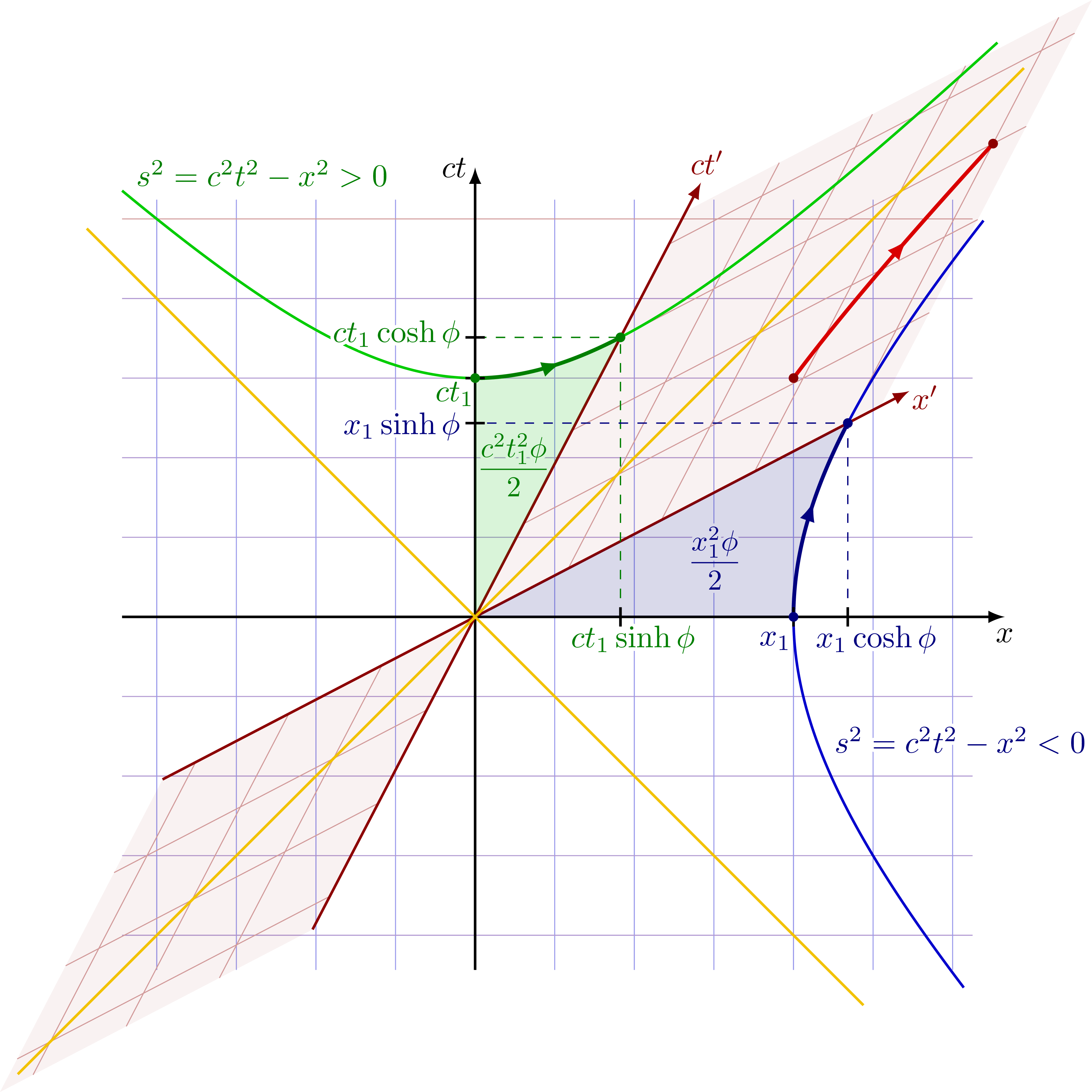
Equations for Lorentz transformation in terms of hyperbolic functions:

Equations for Lorentz transformation in terms of the γ factor and β = v/c:
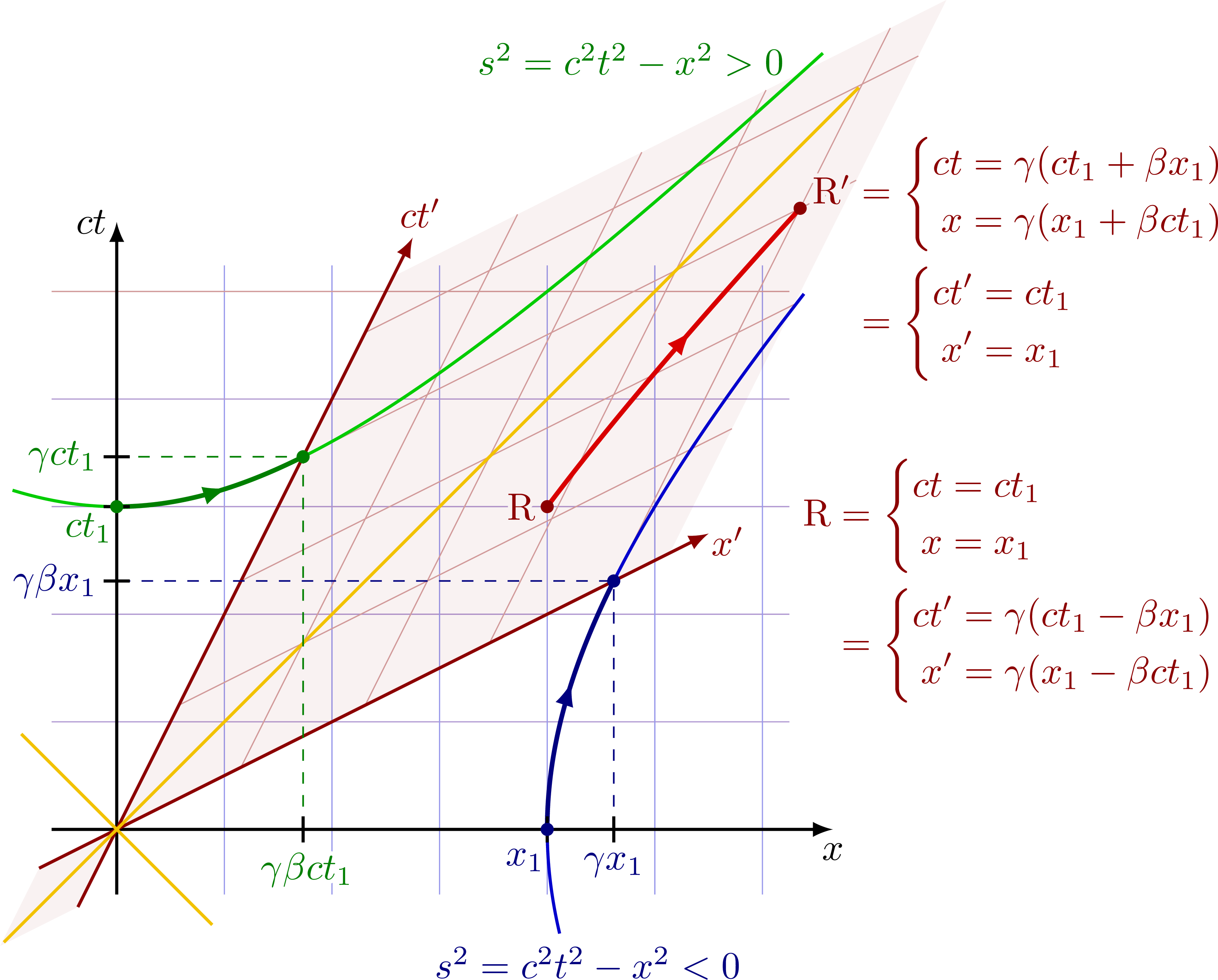
Lorentz transformation matrix with hyperbolic functions sinh and cosh in analogy to the rotation matrix. A boost is a hyperbolic rotation with rapidity 𝜑, where 𝛽 = tanh 𝜑.
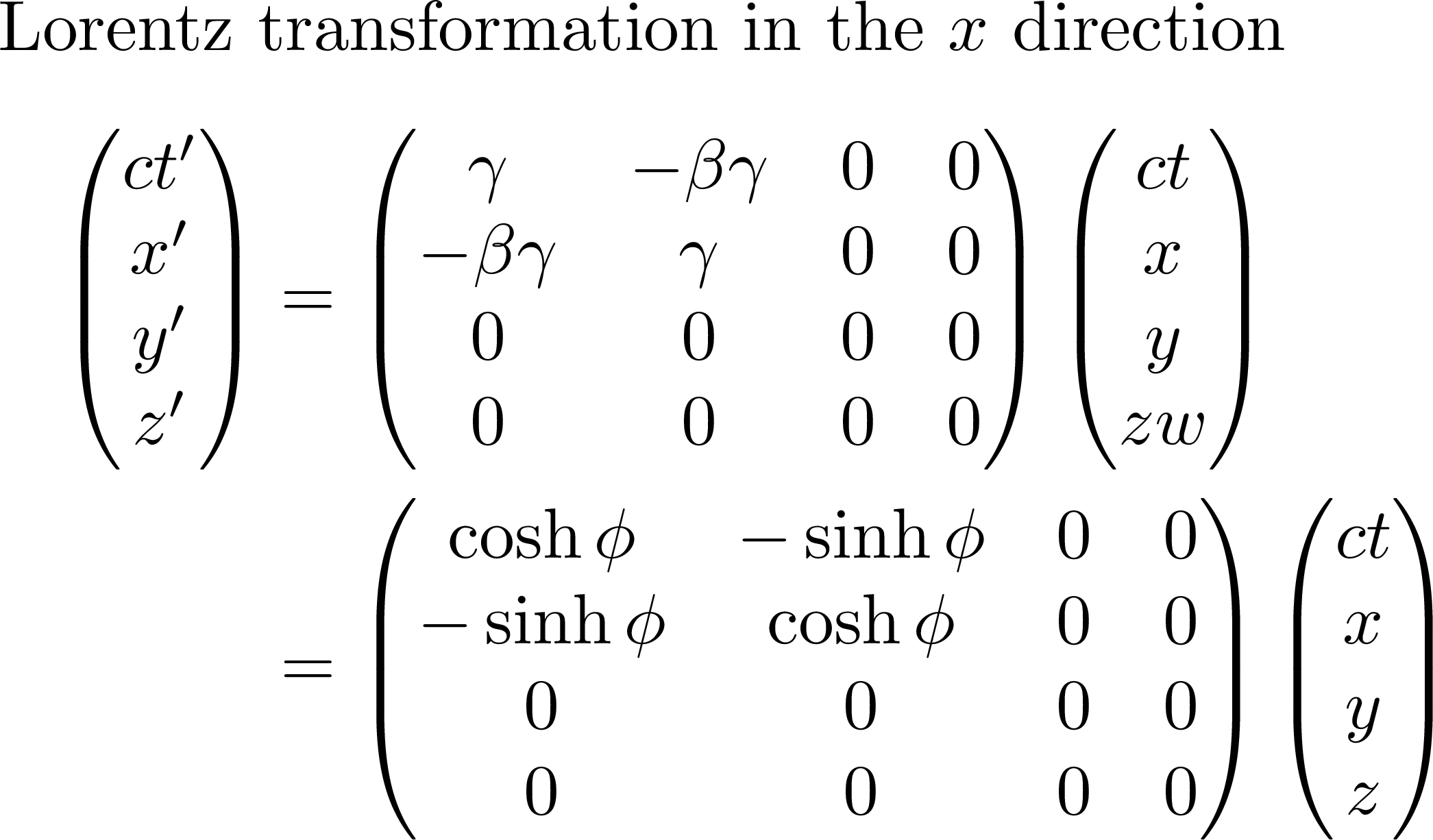
Different hyperbolae in Minkowski spacetime. All points on the same hyperbola have an equal spacetime separation s from the origin (t,x) = (0,0). A boost (i.e. a hyperbolic rotation) moves a point along such a hyperbola, and therefore preserves the spacetime distance (i.e. spacetime distance between two points are invariant under Lorentz transformations).
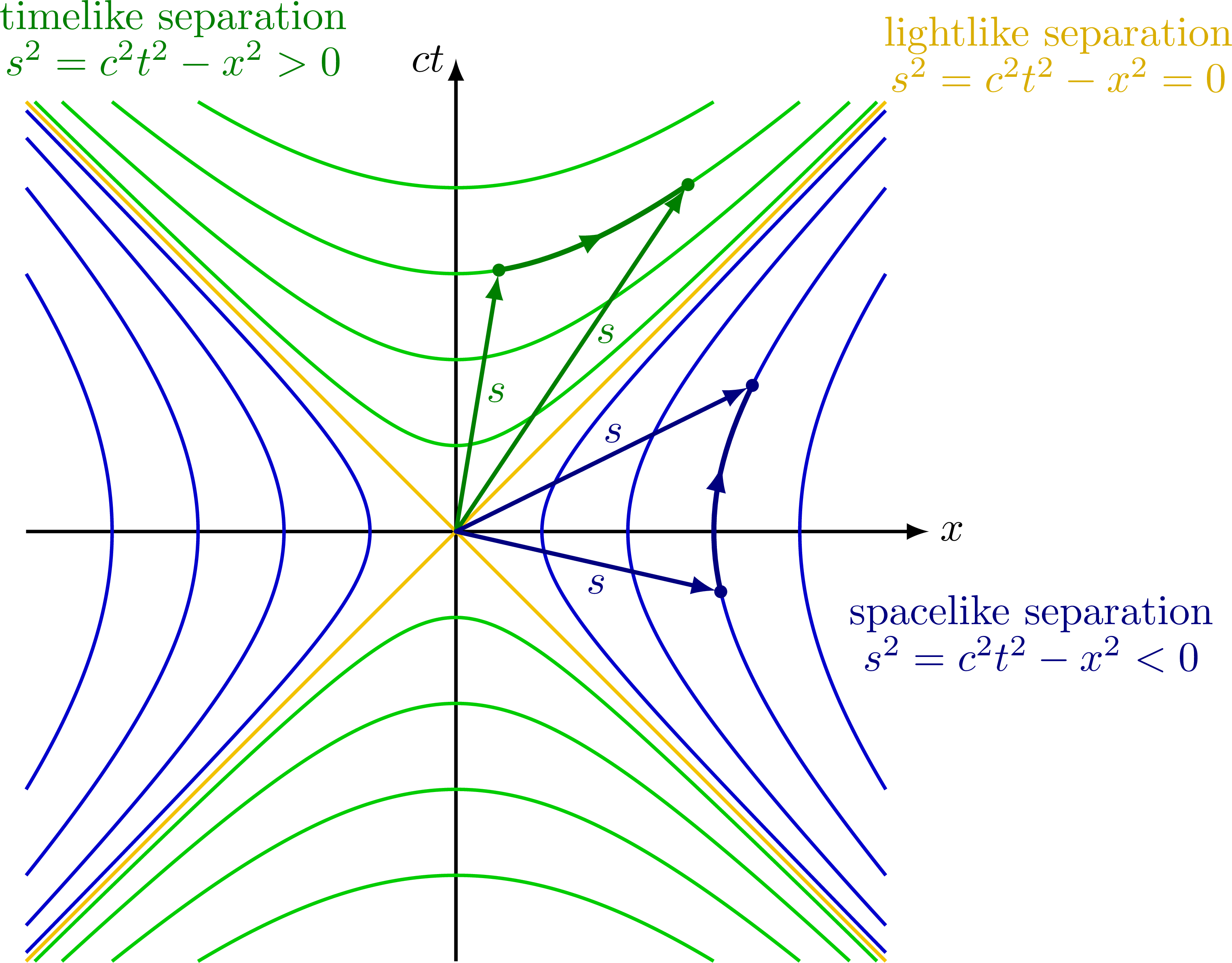
Notice that spacelike separation squared are negative, s2 < 0, so this distance will be imaginary, while timeline separations will be real.
Analogy to Euclidean rotation
Both boosts and rotations preserve the spacetime distance given by the metric ds2 = cdt2 – dx2 – dy2 – dz2. They are part of the so-called Lorentz group.
The transformation matrix for boosts in terms of hyperbolic functions looks very similar to the rotation matrix.
The 2D rotation matrix in the xy plane can be expressed as follows:
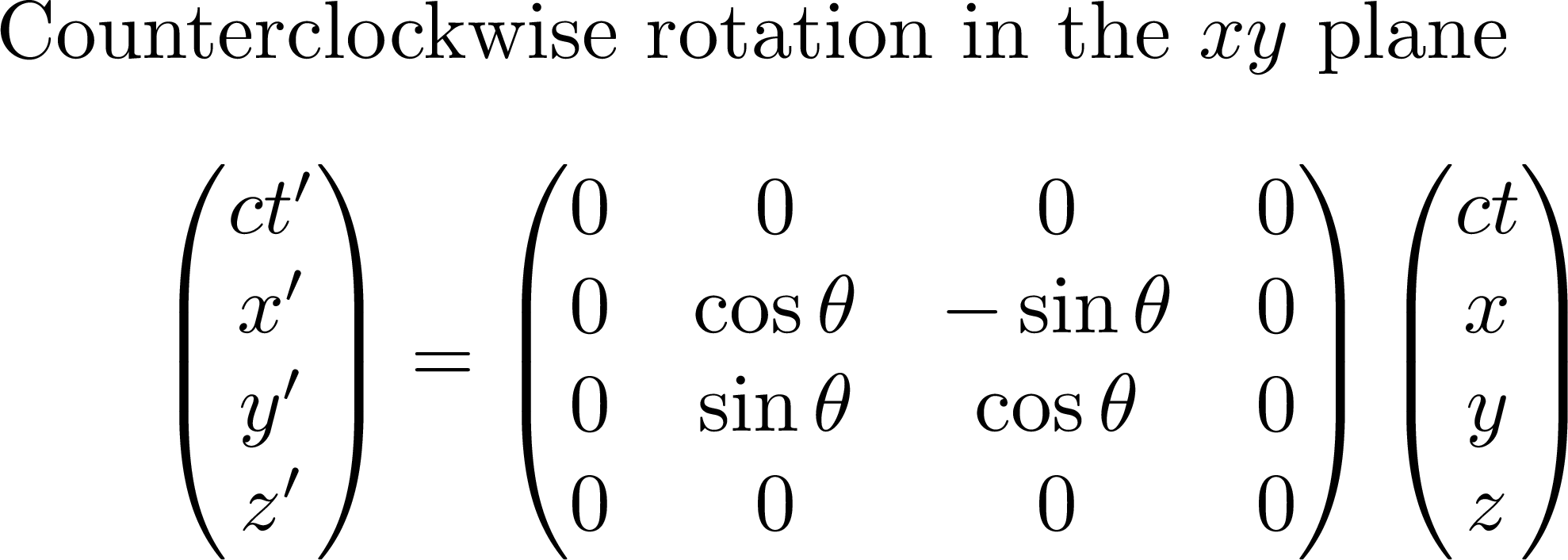
Spacelike slice at t = 0. All points on the same circle have the same (Euclidean) distance r to the origin. Euclidean rotations move points along the circle, and hence preserve this spacetime distance.
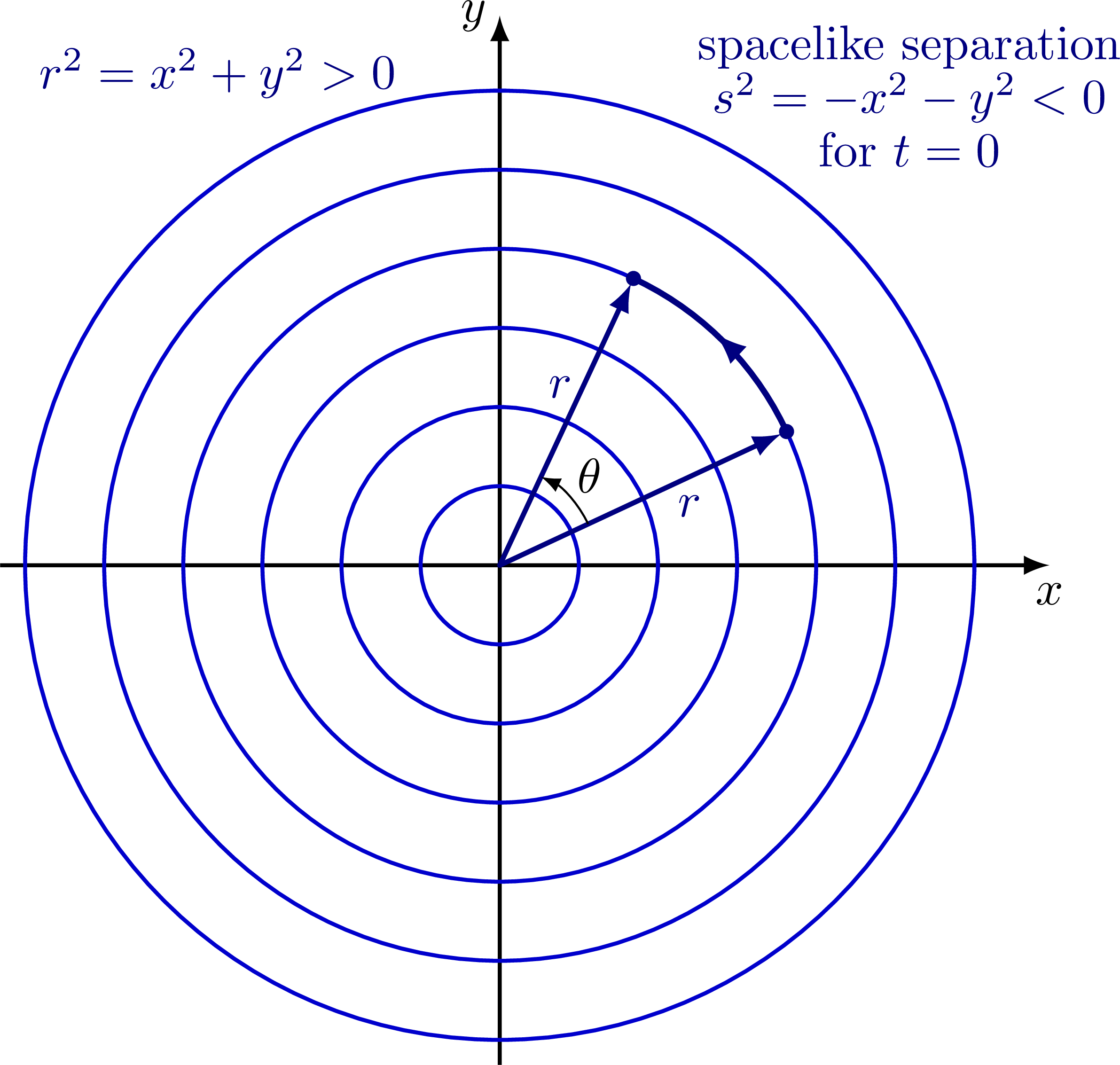
Spacelike slice to illustrate different types of separations.
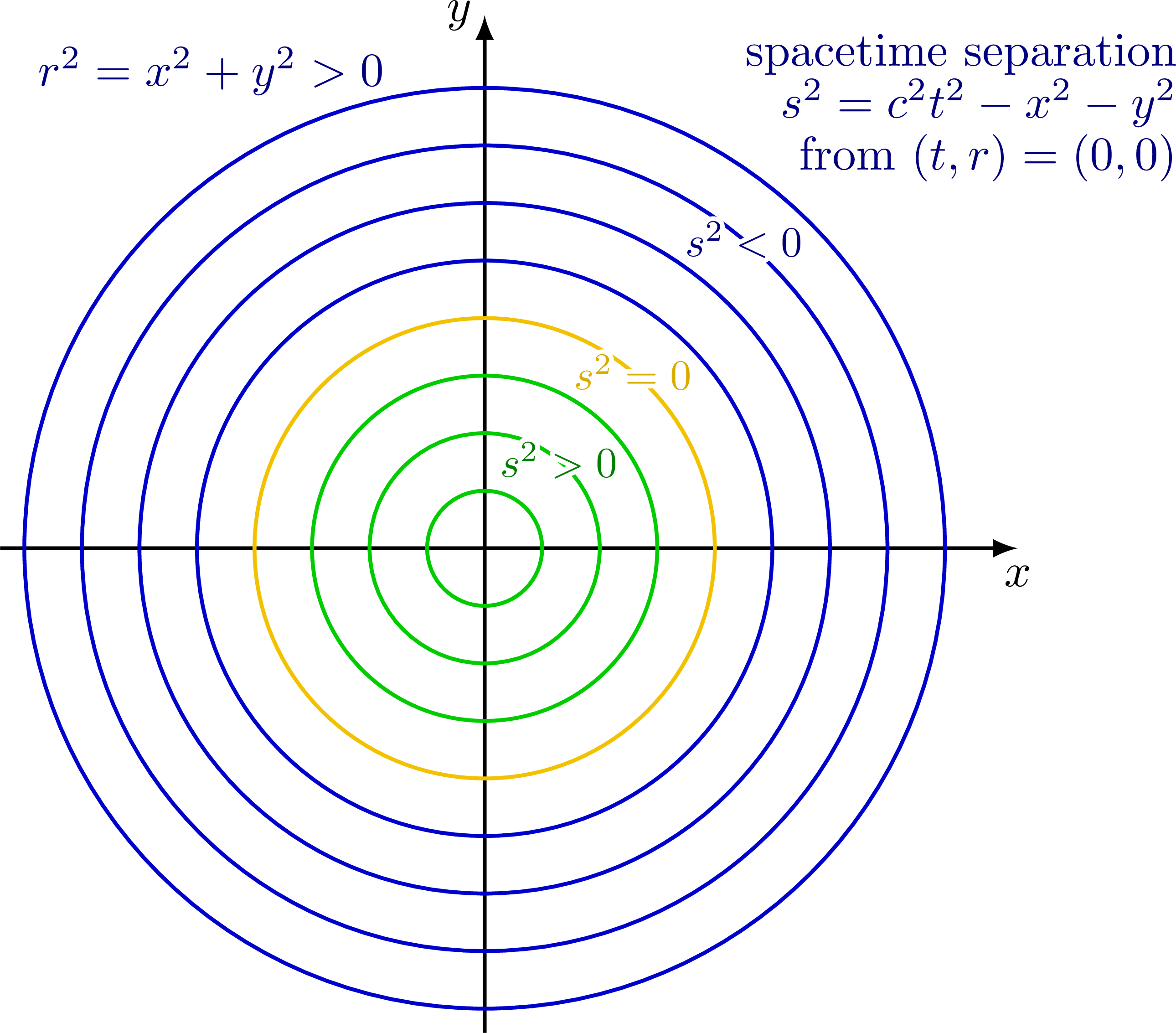
Lorentz factor
Plot of the Lorentz factor as a function of velocity v.
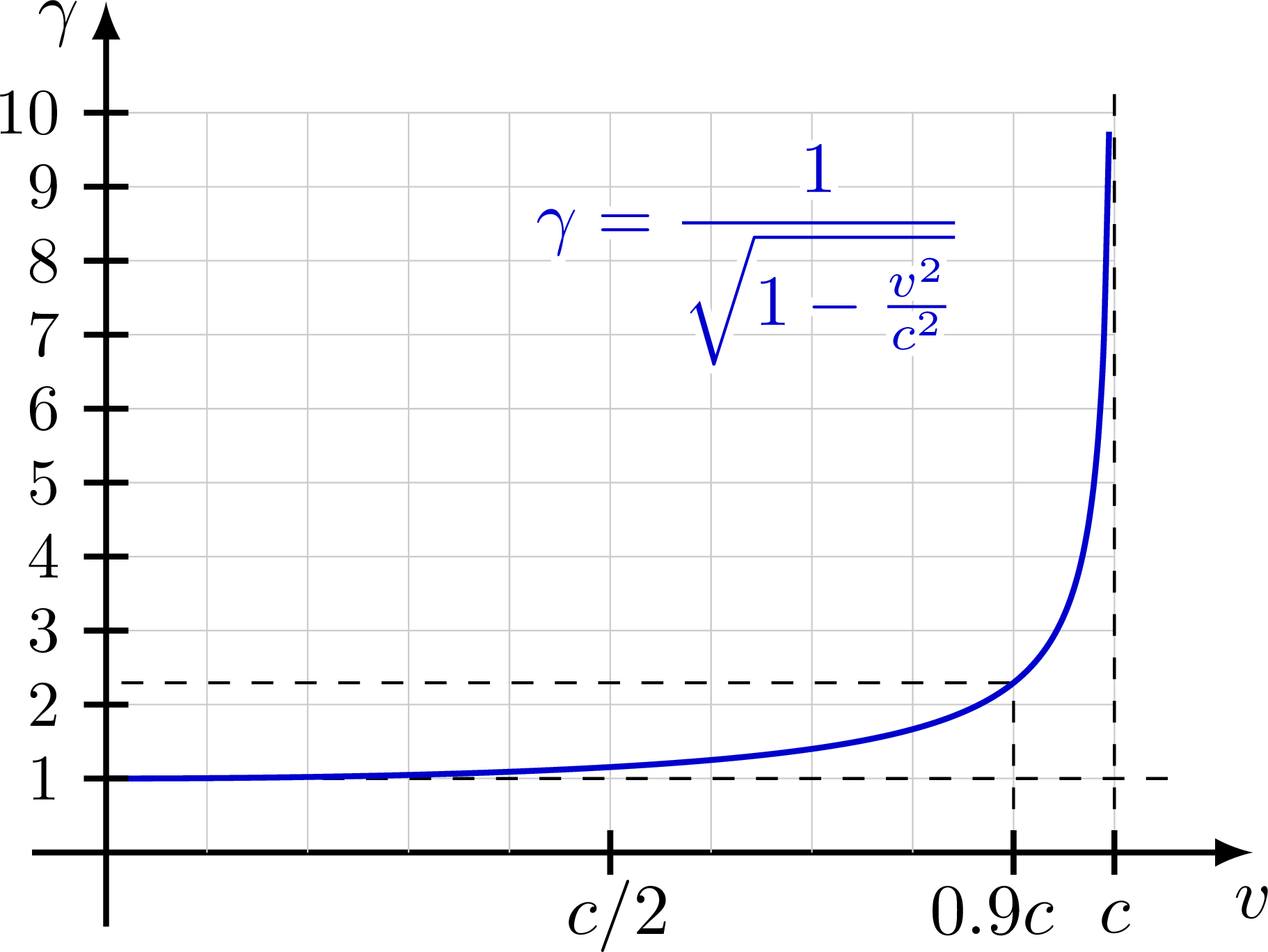
Plot of the Lorentz factor as a function of velocity β = v/c (i.e. in units of c).
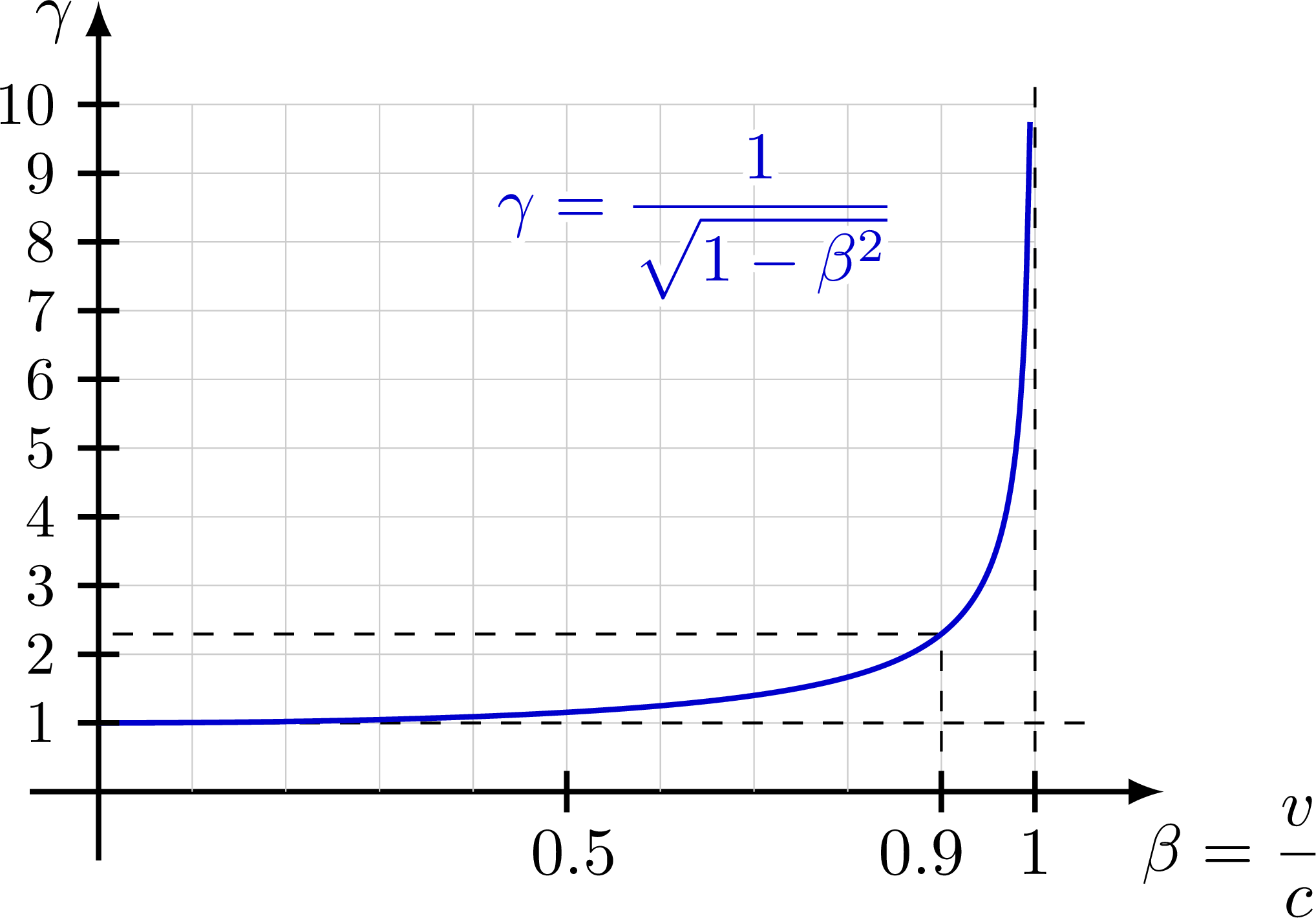
Full code
Edit and compile if you like:
% Author: Izaak Neutelings (October 2021)% Inspiration% "Very special relativity - An illustrated guide", Sander Bais (2007)% http://people.uncw.edu/hermanr/GR/Minkowski/Minkowski.pdf\documentclass[border=3pt,tikz]{standalone}\usepackage{amsmath} % for \text\usepackage{etoolbox} % ifthen\usepackage[outline]{contour} % glow around text\usetikzlibrary{calc} % for adding up coordinates\usetikzlibrary{decorations.markings,decorations.pathmorphing}\usetikzlibrary{angles,quotes} % for pic (angle labels)\usetikzlibrary{arrows.meta} % for arrow size\usepackage{xfp} % higher precision (16 digits?)\contourlength{1.1pt}\tikzset{>=latex} % for LaTeX arrow head\colorlet{myred}{red!85!black}\colorlet{mydarkred}{red!55!black}\colorlet{mylightred}{red!85!black!12}\colorlet{myfieldred}{mydarkred!5} % for S' background\colorlet{myredhighlight}{myred!20} % highlights simultaneity in ladder paradox\colorlet{myblue}{blue!80!black}\colorlet{mydarkblue}{blue!50!black}\colorlet{mylightblue}{blue!50!black!30}\colorlet{mylightblue2}{myblue!10}\colorlet{mygreen}{green!80!black}\colorlet{mypurple}{blue!40!red!80!black}\colorlet{mydarkgreen}{green!50!black}\colorlet{mydarkpurple}{blue!40!red!50!black}\colorlet{myorange}{orange!40!yellow!95!black}\colorlet{mydarkorange}{orange!40!yellow!85!black}\colorlet{mybrown}{brown!20!orange!90!black}\colorlet{mydarkbrown}{brown!20!orange!55!black}\colorlet{mypurplehighlight}{mydarkpurple!20} % highlights simultaneity in ladder paradox\tikzstyle{world line}=[myblue!40,line width=0.3]\tikzstyle{world line t}=[mypurple!50!myblue!40,line width=0.3]\tikzstyle{world line'}=[mydarkred!40,line width=0.3]\tikzstyle{mysmallarr}=[-{Latex[length=3,width=2]},thin]\tikzstyle{mydashed}=[dash pattern=on 3 off 3]\tikzstyle{rod}=[mydarkbrown,draw=mydarkbrown,double=mybrown,double distance=2pt,line width=0.2,line cap=round,shorten >=1pt,shorten <=1pt]
Click to download: relativity_minkowski_diagram.tex • relativity_minkowski_diagram.pdf
Open in Overleaf: relativity_minkowski_diagram.tex

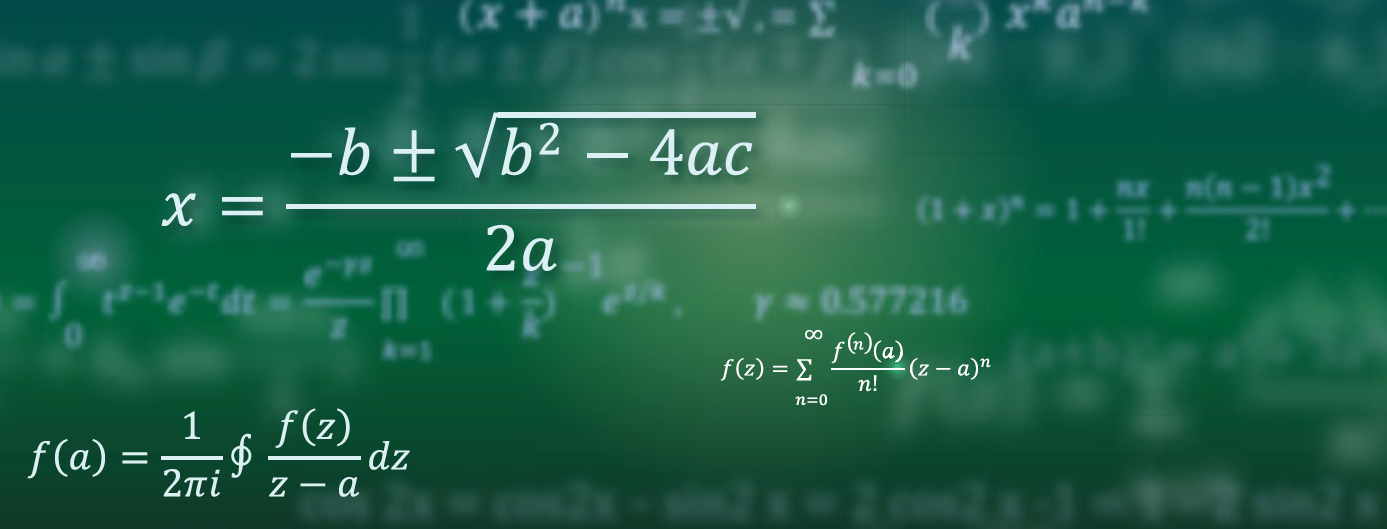
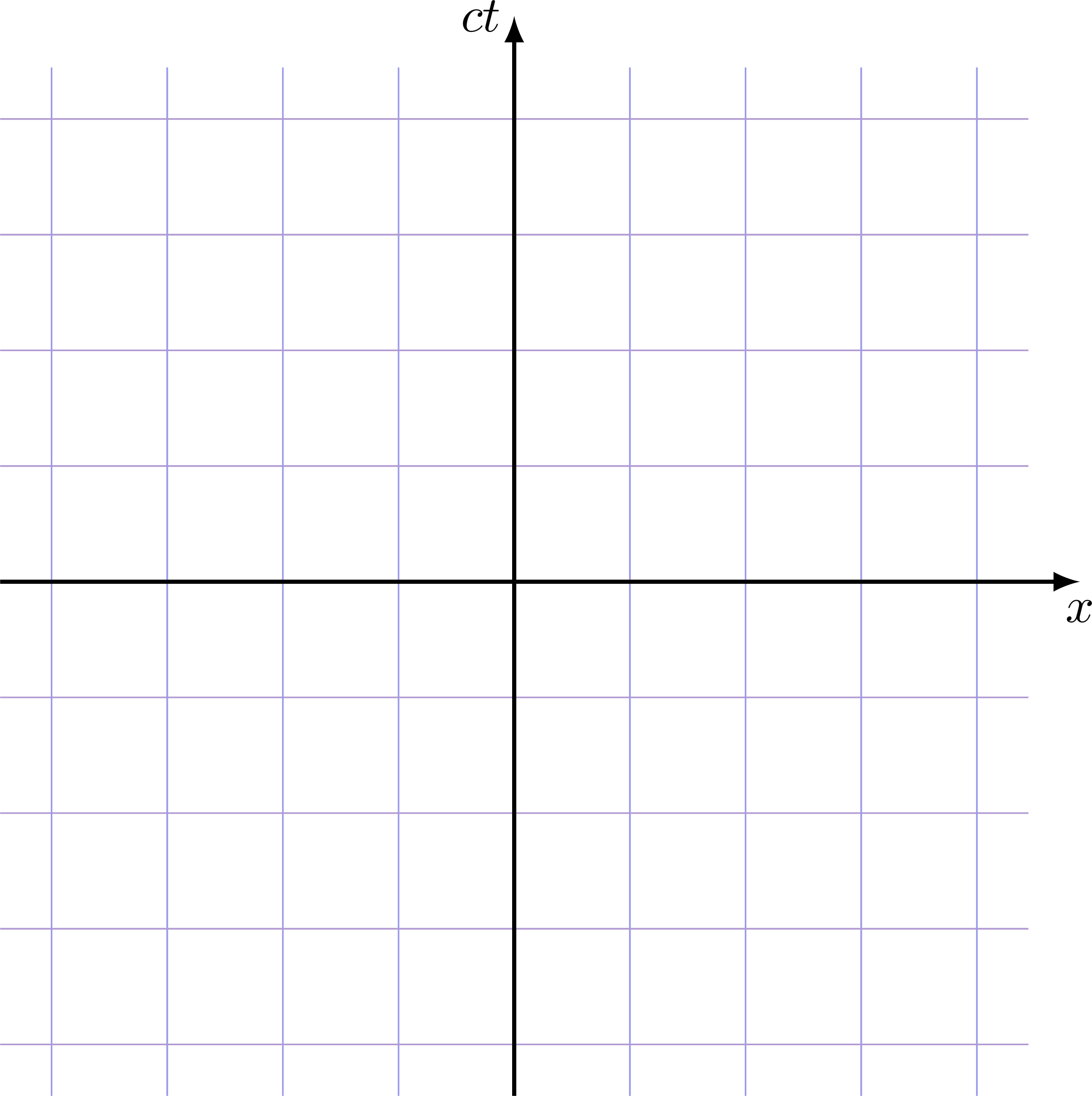
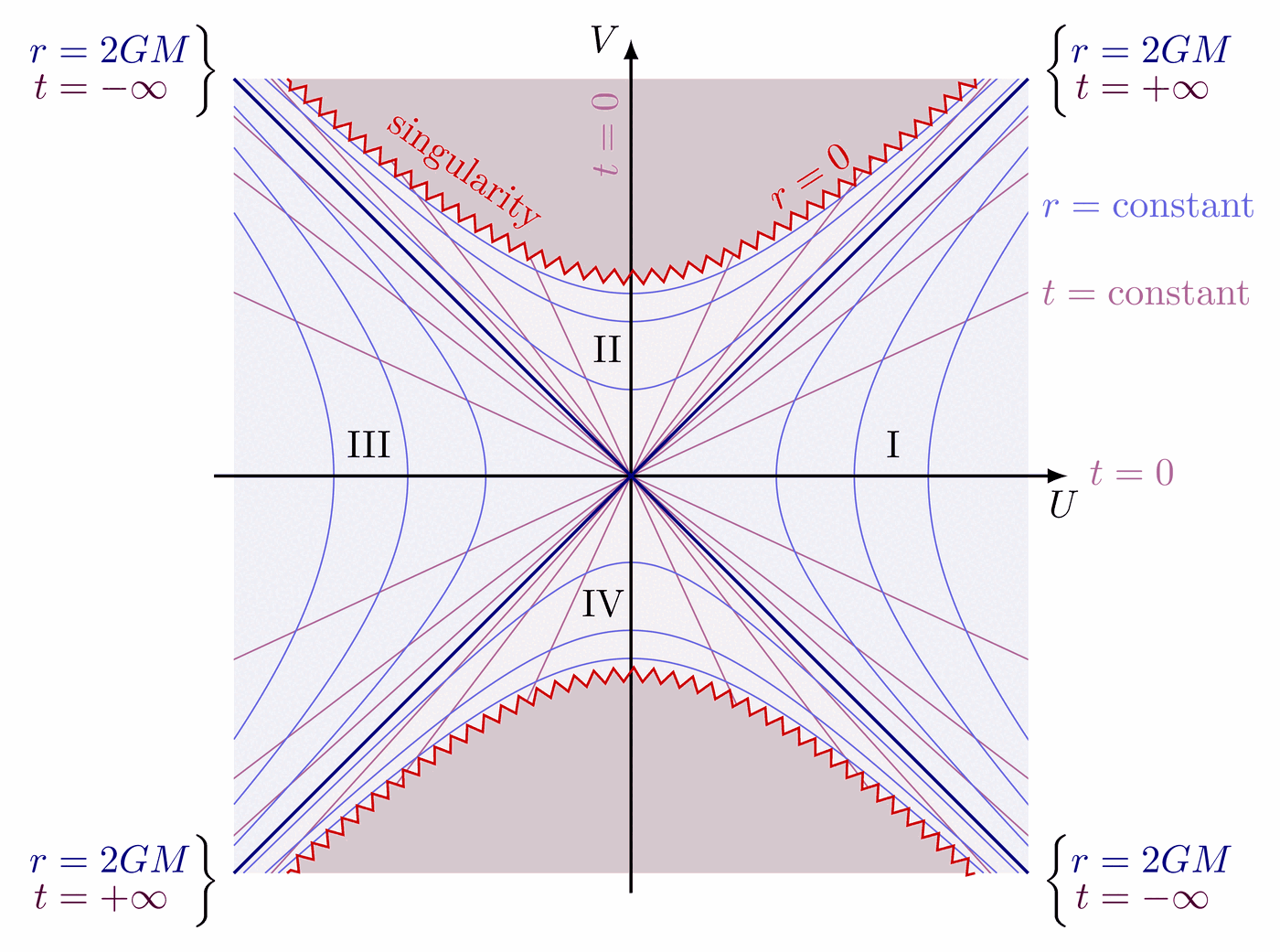
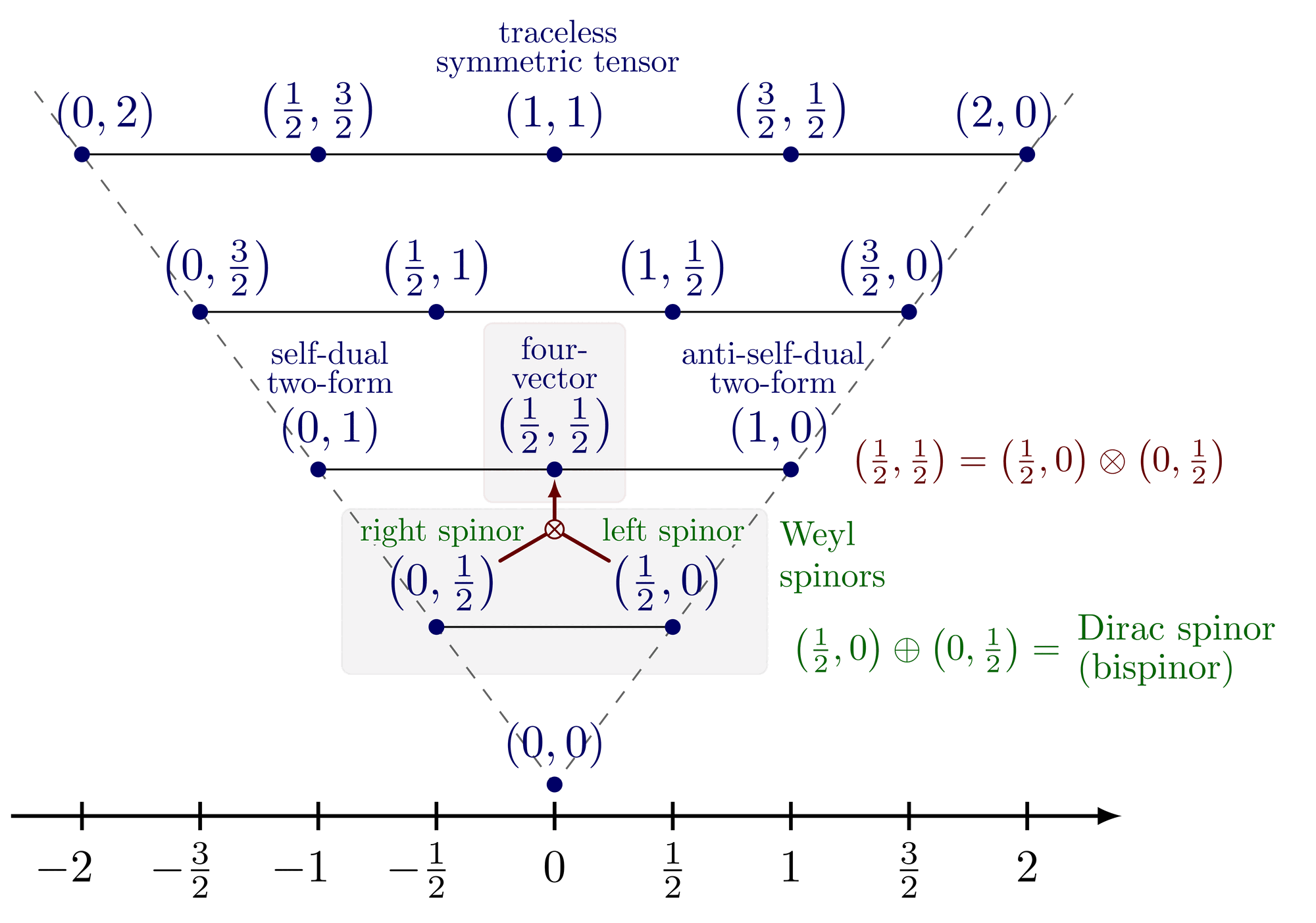
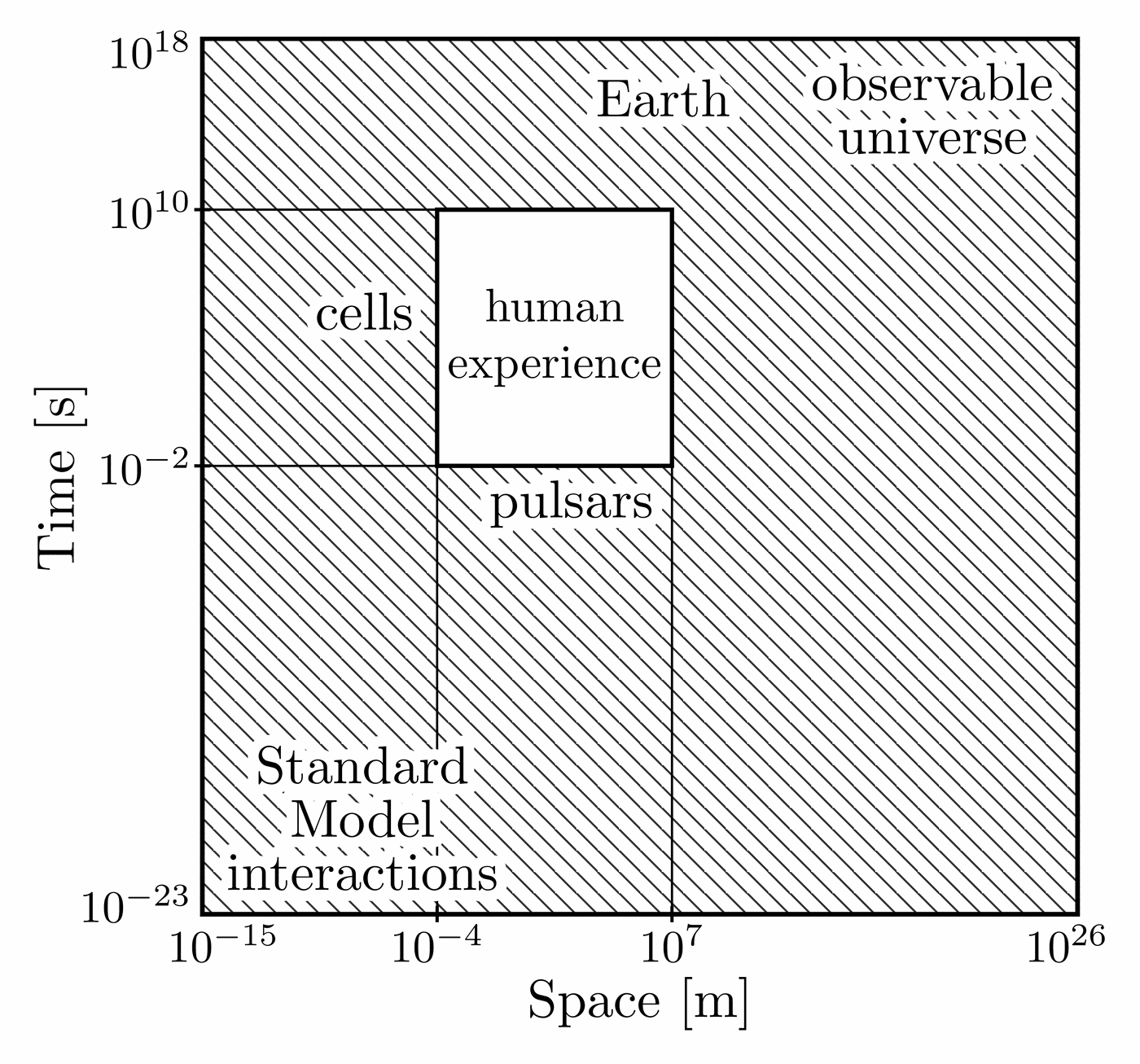
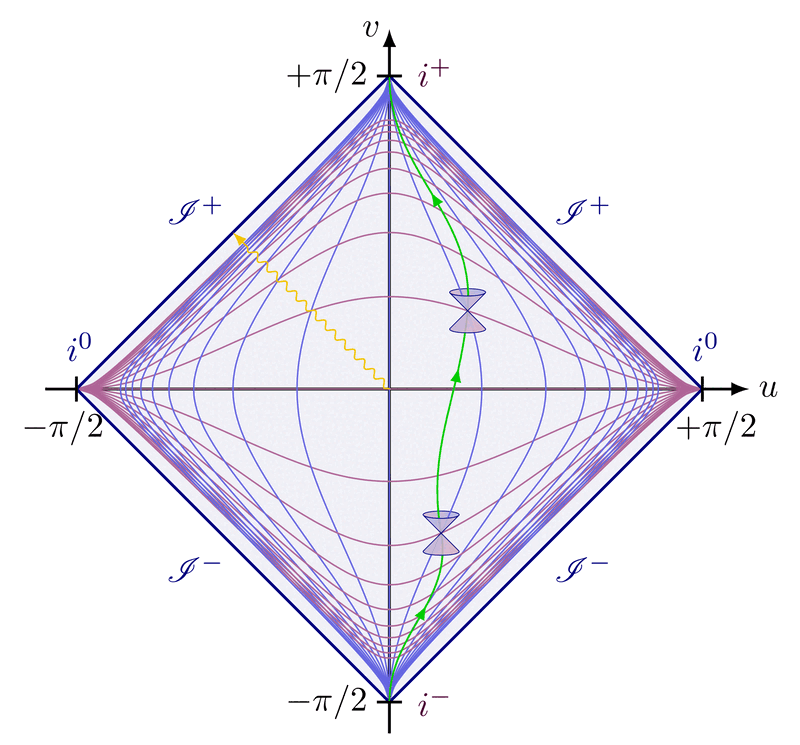
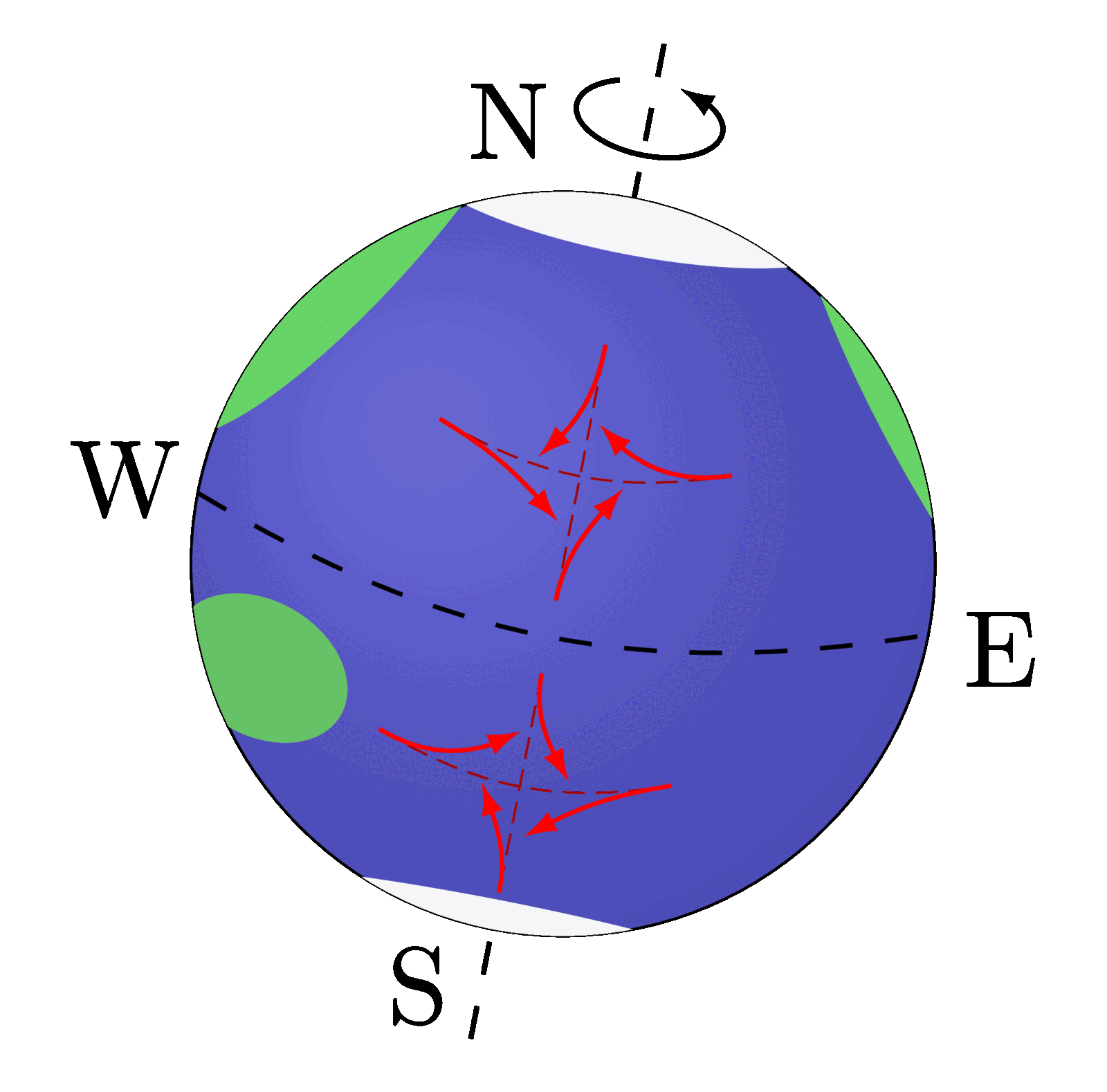

Very helpful figures! Thank you!! Found one typo: In Fig. 6, one of the orange arrows is lablelled timelike but it should be lightlike.
Hi Cyrus,
Thank you so much for pointing that out, I really appreciate that! I was probably copy-pasting without carefully reviewing the output. It is now corrected.
Hope it did not confuse anyone, because this post has been out for a while…
Please let me know if you find any other issues.
Cheers,
Izaak
These diagrams are perfect and thank you very very much! I am teaching this to a Romanian Year 12 at the moment and was looking for good diagrams. You have put a lot into his and I am extremely grateful.
Thank you very much for your message, and good luck!
Hello! Firstly, I would like to congratulate you on your excellent work, which will be very useful in my classes. Secondly, I have a question: in line 1004 of the LaTeX code, shouldn’t it be $\Delta x$ instead of $\Delta x’$?
Hi Herbert! Thank you kindly for your correction! I think you are right, it should be without a prime in that line. It is now corrected in this post. Good luck with teaching! Izaak
There is a type of Space-Time diagram in which the scale for both systems is the same. They are called “Loedel Palumbo Diagrams” and with them any analysis of special relativity is significantly simpler. They were developed in the mid-20th century by the Uruguayan physicist Enrique Loedel Palumbo from the simple, but brilliant idea, of considering in a diagram of Minkowski not one, but two “mobile” systems with the same speed, but in opposite directions and then remove the “fixed” system from the middle and… voila! you have two systems with the same scale! .The relative speed between these two systems is now given by the sine of the angle between the axes, not by the tangetic and trigonometry is that of all life. It is a shame that they are not very widespread.
This is a link to the demo
https://www.youtube.com/watch?v=o4kKeG8PyyM
Great plots! Please… plot the inverse of Lorentz factor or both – gamma and 1/gamma.
Thanks in advanced
Many thanks for these excellent plots and the open source code to create revised versions. I am using the figures in an undergraduate modern physics course, with full credit to you. You’ve done our community a great service.